Choosing a planting style for your garden brings visual harmony to your outdoor space and helps guide your plant choices and layout. At King & Co, we’ve curated some of our favourite planting styles to inspire your next project.
Whether you prefer the clipped precision of a formal garden or the relaxed wildness of a native one, there’s something to suit every taste. Explore our favourite styles below and discover the one that best reflects your space and lifestyle!
Formal gardens are know for their clear structure, strong lines, and often symmetrical layouts. To maintain this sense of symmetry and order throughout the year, evergreen plants are frequently incorporated. Some of our favourite plants for this style of garden include:
Euonymus japonicus ‘Jean Hugues’ is an excellent alternative to Box, especially since it’s resistant to Box blight and Moth. This plant is perfect for creating small, formal hedges and is ideal for lining pathways. Its upright growth and tough leaves also make it suitable for geometric topiary.
Bay (Laurus nobilis) is a versatile evergreen perfect for creating a statement. At King & Co we usually stock Bay trees as clipped topiary, or as half or quarter standard trees. Their dense foliage and ability to withstand regular pruning make them highly suitable for shaping in formal gardens.
Olive (Olea europaea) can soften geometry with graceful, silvery foliage. Regular trimming can maintain a lovely round shape, or it can be left to develop into a larger sphere or a charming small tree.
All three options complement stone or slate paths beautifully. Both stone and slate are popular choices for formal gardens because they create sharp, clean lines. Pairing the plants we discussed with these materials would enhance the structural clarity of the garden and create a superb environment for enjoying quieter moments.
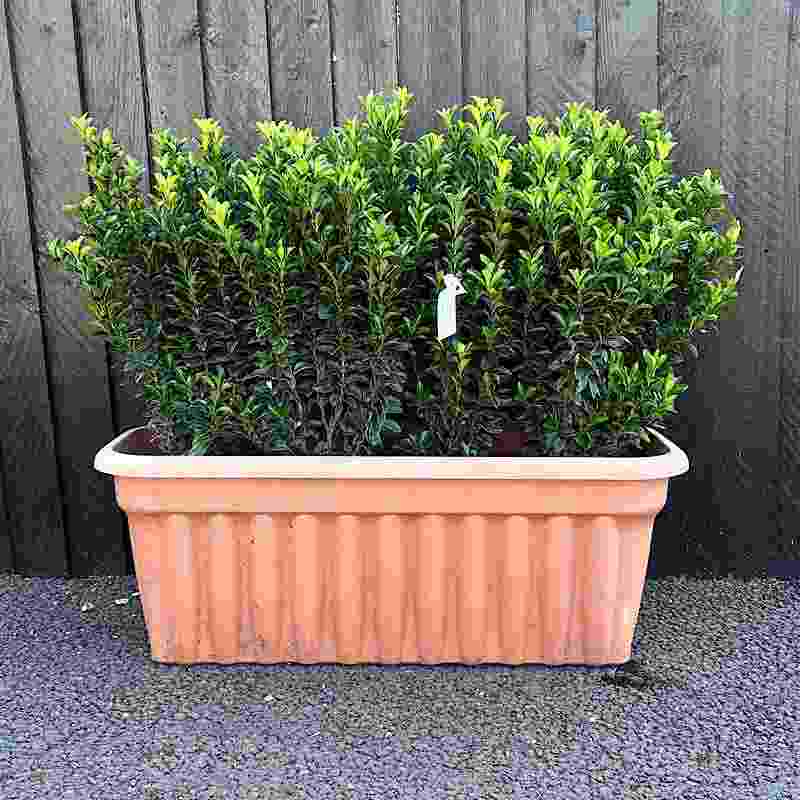
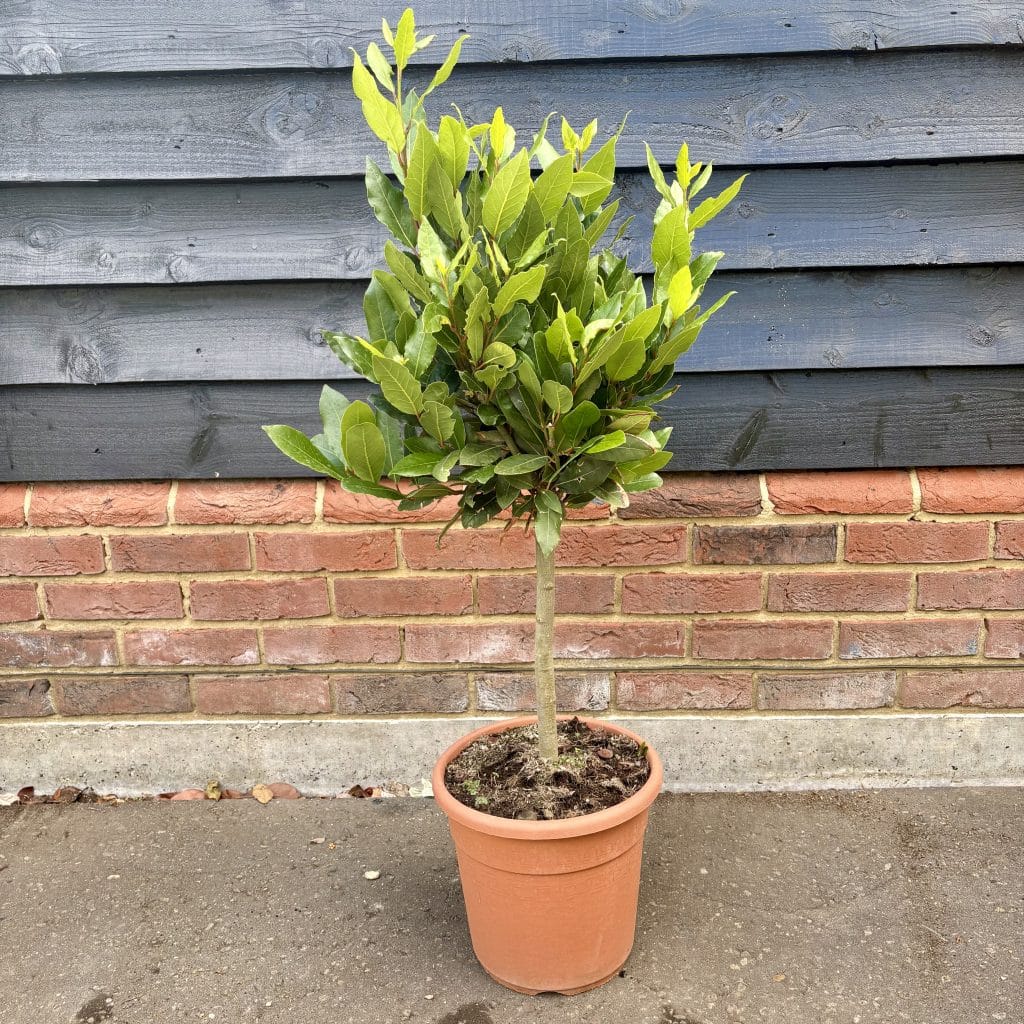
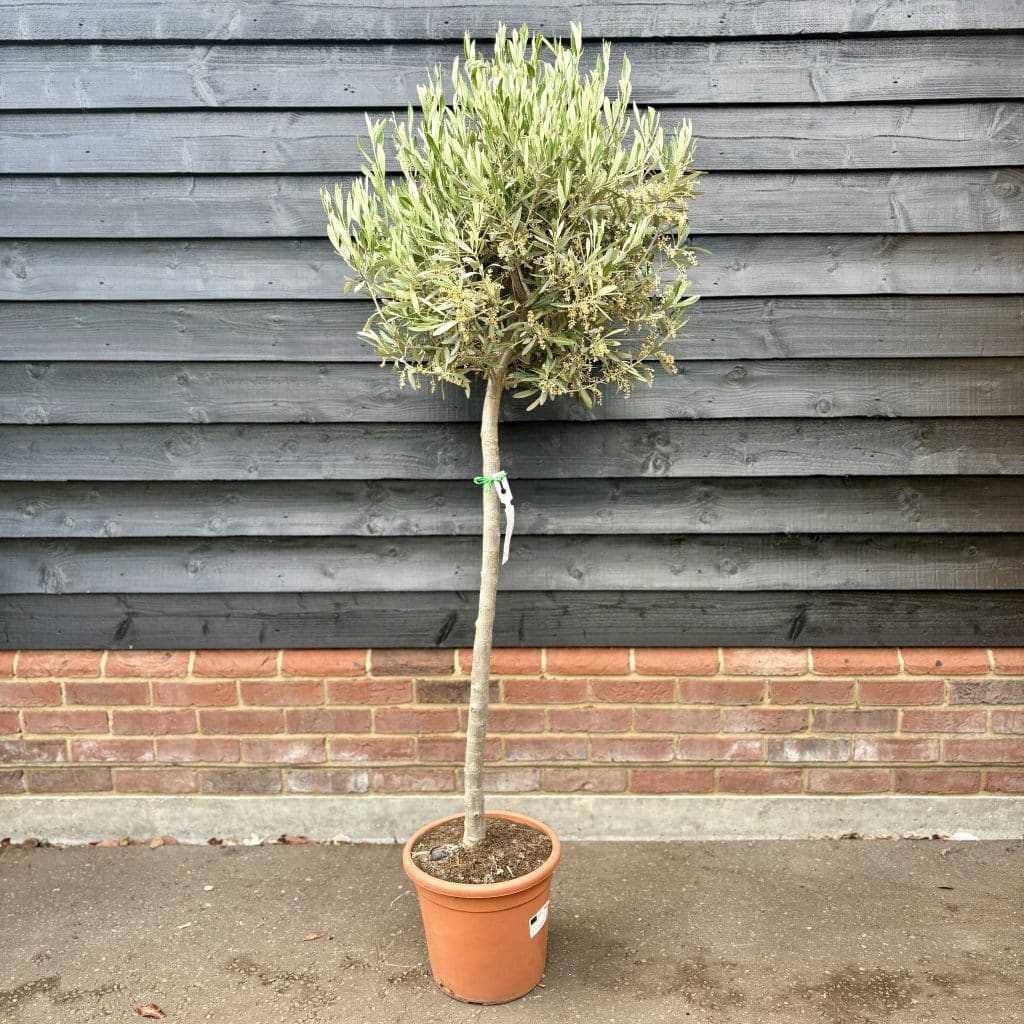
Tropical garden designs are renowned for their striking impact, structure, and form, achieved through a combination of large-leaved foliage and contrasting colors. Selecting plants with these characteristics is essential to capture the essence of this planting style. Incorporating a water feature can further enhance the tropical ambiance by replicating soothing natural sounds. This can be achieved effectively with a pond, waterfall or a fountain.
Aucuba japonica, also known as Spotted laurel, features large, leathery, and glossy green leaves that are often splashed with golden-yellow spots or variegation. Its broad, vibrant foliage is similar to that of many tropical plants.
Bamboo (Phyllostachys) has tall, slender canes and feathery leaves, that evokes the imagery of jungles and tropical forests. It’s an excellent choice for creating a lush, exotic feel.
Phormium, commonly known as New Zealand Flax, has distinctive long, strap-shaped leaves fan out elegantly, creating a striking silhouette. This plant is perfect for adding structure and mirrors the bold, sculptural look often associated with tropical plants
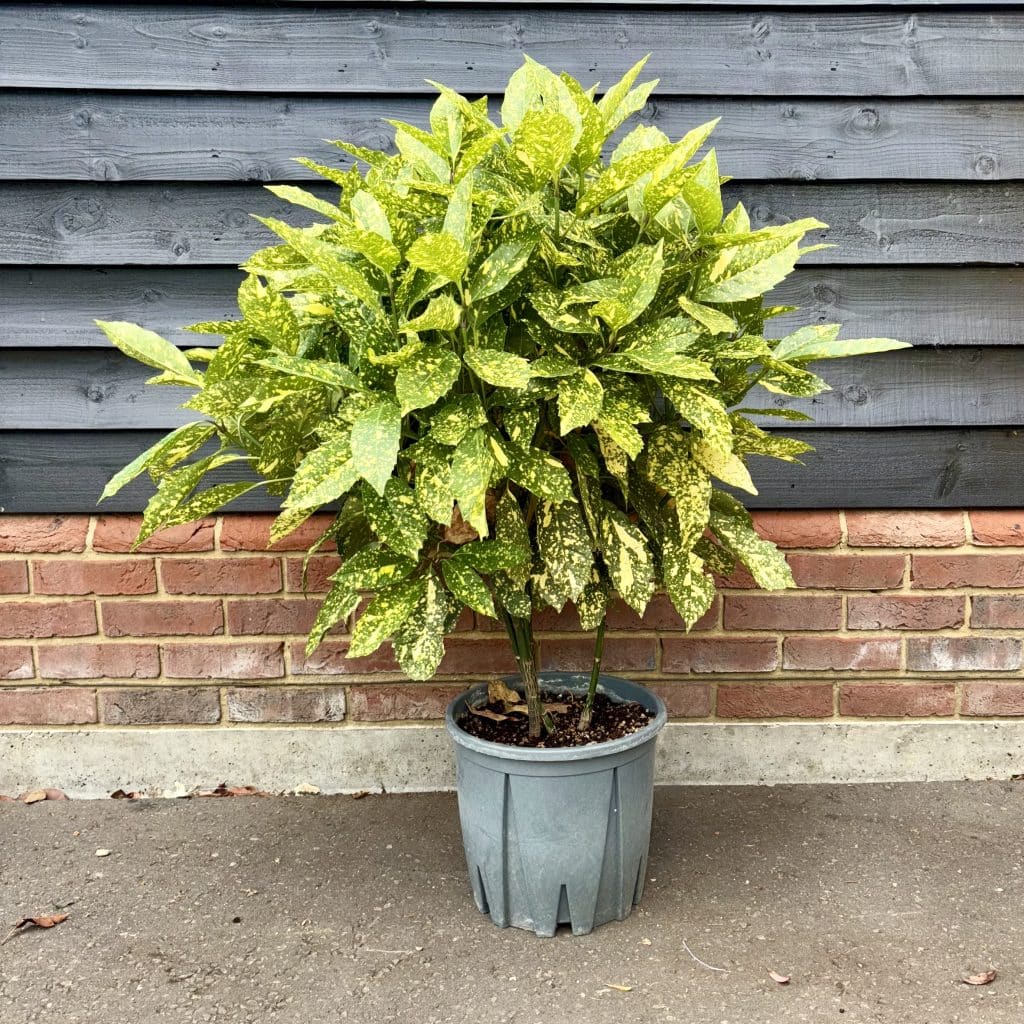
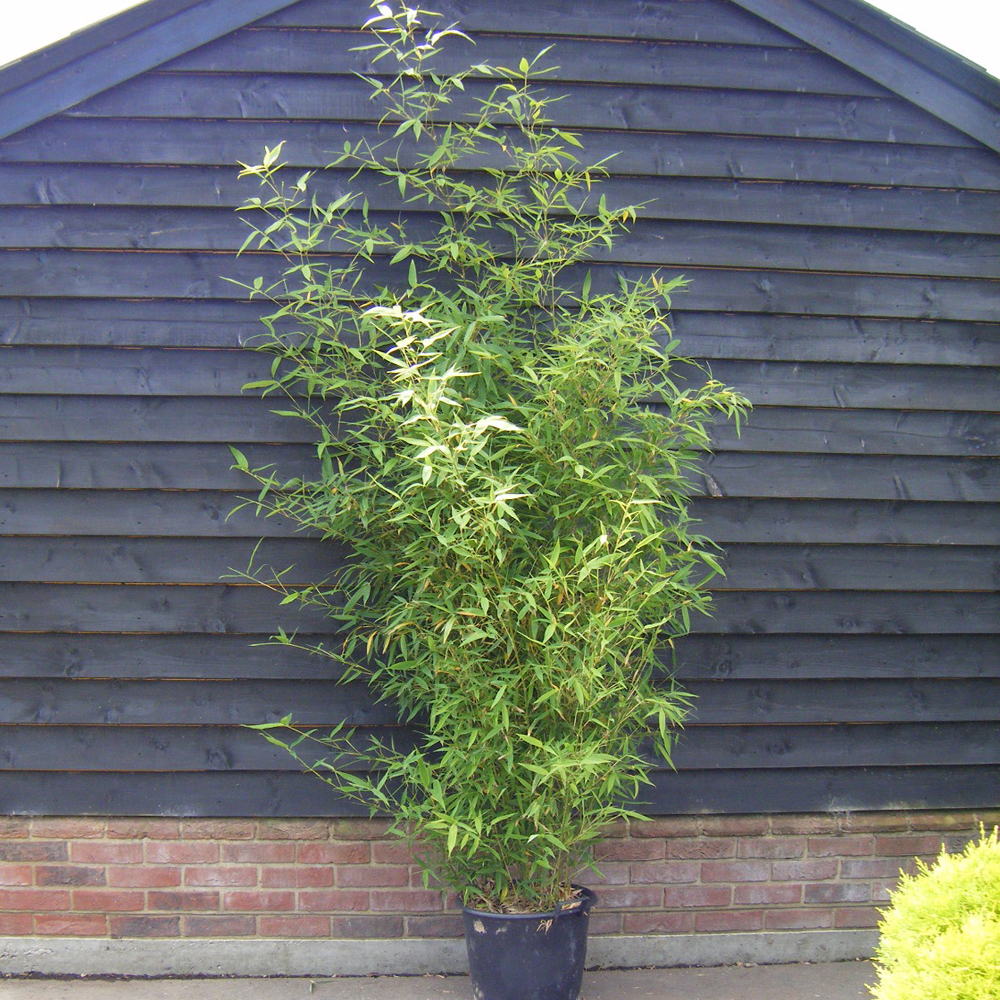
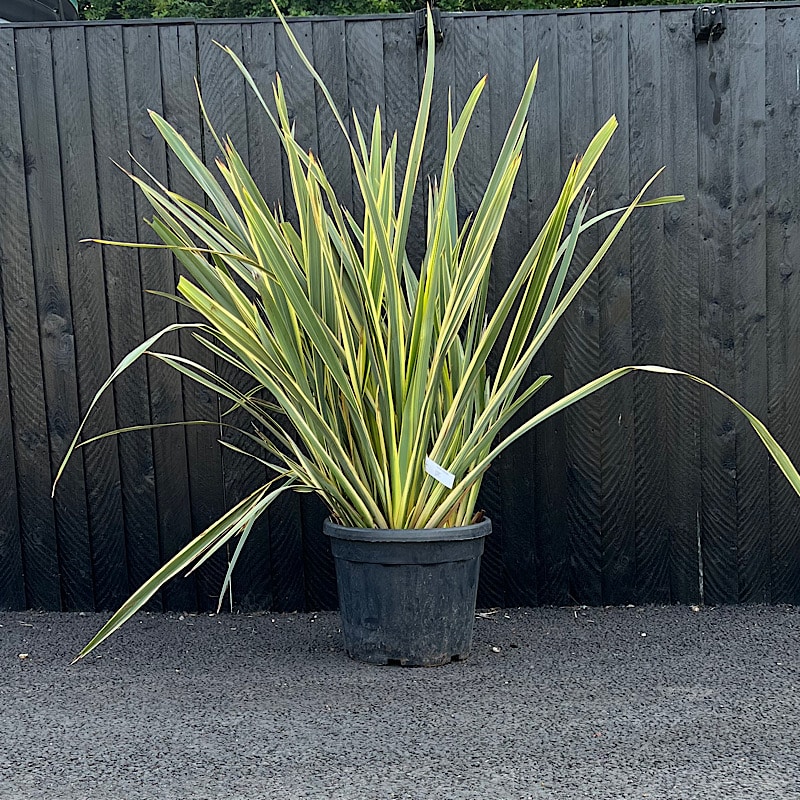
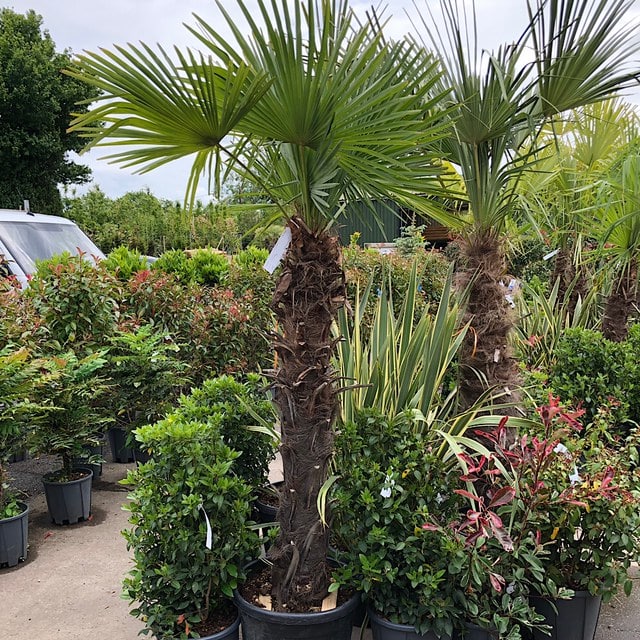
Trachycarpus fortunei is another good choice for tropical gardens. Its large, dark green, fan-shaped leaves resemble the lush palms of rainforests, enhancing the tropical feel of any space. The stout, fibre-covered trunk further contributes to this exotic appearance.
Italian-inspired planting schemes, much like formal gardens, are characterised by their emphasis on structure, balance, symmetry, and a strong sense of design. These schemes often feature a variety of evergreen plants to ensure year-round structure and visual contrast. Additionally, they frequently incorporate architectural elements such as benches, statues, and fountains, which further enhance both structure and vertical interest within the garden.
Ilex crenata is popular alternative to Box, especially since it’s resistant to Box blight and Moth. With dense foliage that responds well to clipping, it is an excellent choice for maintaining ball or cone shapes. These clipped forms look particularly striking when planted in terracotta pots.
Cupressocyparis leylandii, commonly known as Leyland Cypress, is an excellent choice for Italian-style gardens, particularly when shaped into spirals, cones, or double pom-poms. These forms reflects the classical Renaissance aesthetic found in the gardens of Tuscan villas and Roman estates.
Italian cypress (Cupressus sempervirens ‘Pyramidalis’) has a tall, slender form that is synonymous with the Italian landscape. Its narrow, upright growth creates a stunning vertical accent, perfect for the symmetry and geometry associated with the Italian planting style.
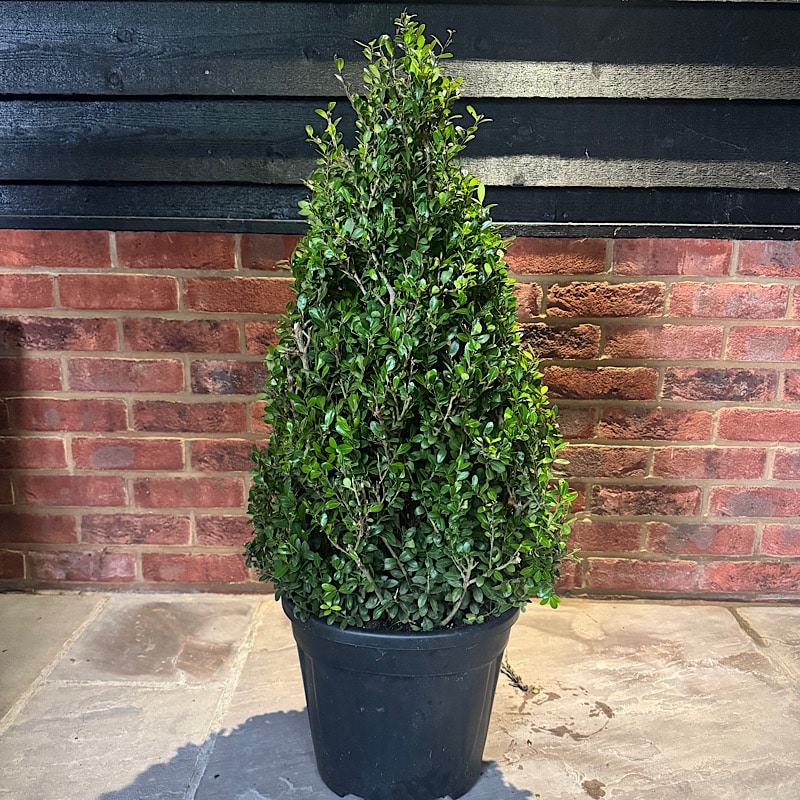
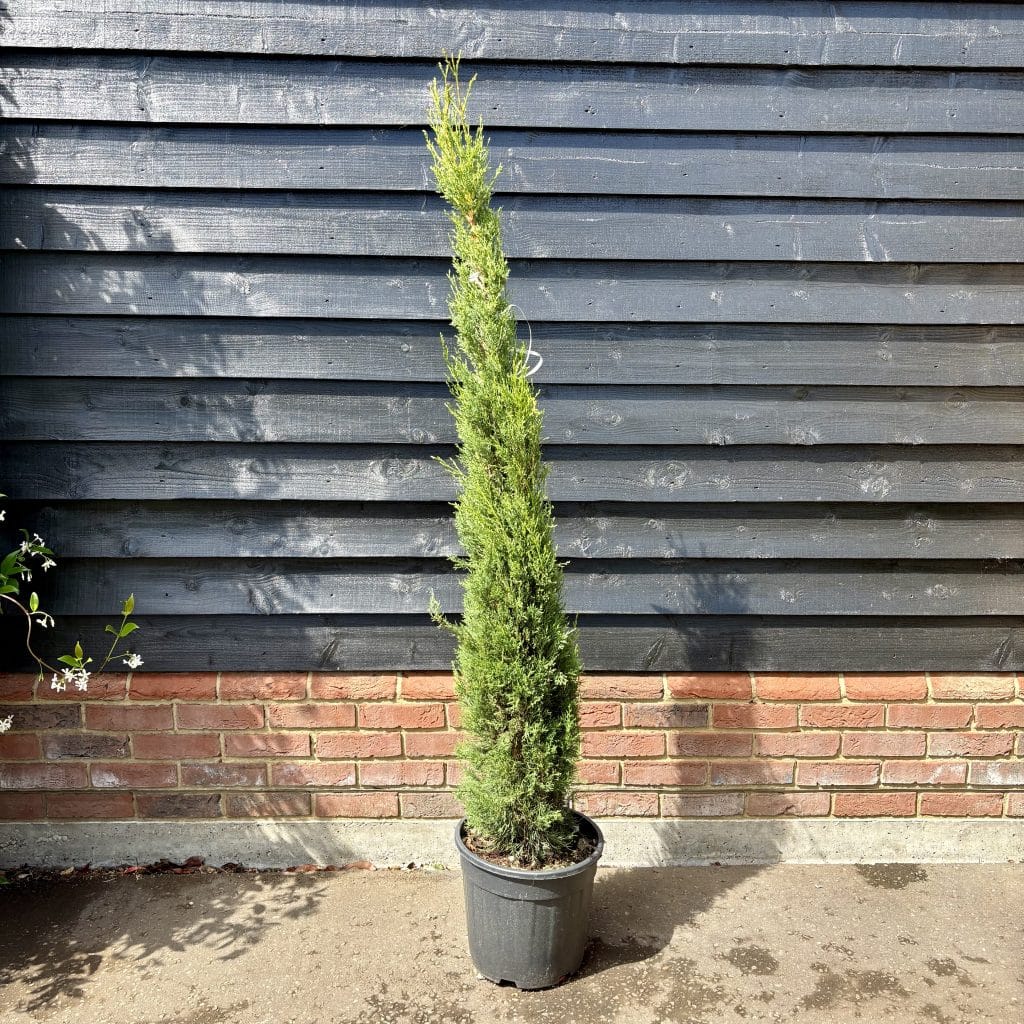
Magnolia grandiflora is not native to the Mediterranean, but its formal shape, rich texture, evergreen presence, and stunning flowers make it surprisingly compatible with Italian-style garden aesthetics. It brings structure and softness, especially when paired with hard surfaces and clipped forms.
All of these plants would pair beautifully with natural stepping stones, arbors, or gazebos. Gentle topiary and water features would also enhance the authentic Italianate style.
A native-style garden in Britain focuses on celebrating the natural beauty, character and biodiversity of Britain’s own flora. It reflects local landscapes and often blends seamlessly with the surrounding environment.
British‑provenance trees like Silver birch, Rowan, Field maple, Oak and Wild cherry are excellent choices for native British gardens because they support biodiversity, offer seasonal interest, and reflect the natural character of the UK landscape. They also provide gardens with canopy and structure.
Native shrubs such as Dogwood, Hazel, Hawthorn, Spindle, and Sweet Briar are excellent choices for underplanting. Underplanting helps create structural layers, supports local wildlife, and enhances the natural aesthetic of the landscape. Evergreen shrubs like Holly and Yew provide year-round support for wildlife too.
Native hedging is an excellent choice for enhancing boundaries in planting schemes. Our hedging packs typically feature a mix of species such as Hawthorn, Field Maple, Hazel, Dogwood, and Dog Rose. These native plants can be effectively planted in staggered double rows to provide winter interest, food for birds, vibrant autumn colours, and natural screening. Incorporating thorny species like Hawthorn can act as a natural deterrent to discourage unwelcome visitors too.


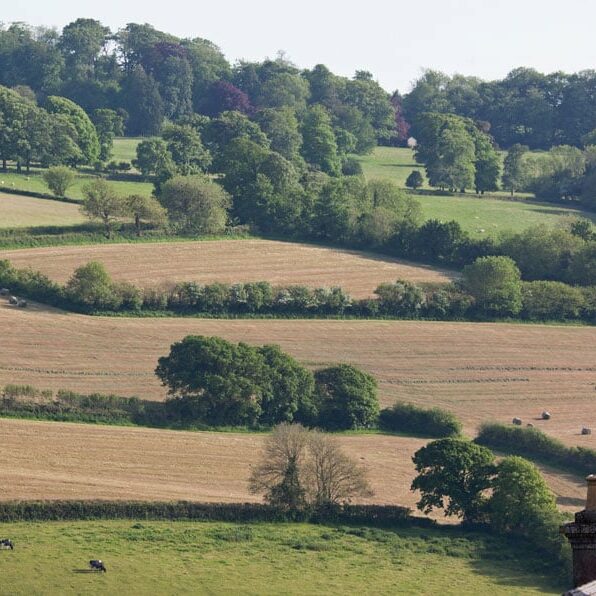
If you want to see the best results from your newly planted tree it’s essential to provide the right care, especially in its early years! From soil preparation to proper watering techniques and maintenance, these tree care tips will help to support healthy tree growth.
For the best results, we recommend improving the soil quality of the planting site before installation. You can do this by digging larger holes and incorporating multi-purpose compost and organic matter, such as well-rotted animal manure, into the backfill. If the drainage is poor, it is better to completely replace the soil and add a 2-3 inch layer of pea shingle at the bottom of the holes. This will help improve drainage and ensure that the tree roots are not sitting in water.
Once you are ready to plant, you can apply a rootgrow mycorrhizal fungi at the base of the planting pit. This supports root development, eases transplant shock, and improves nutrient uptake. You can also mix a slow-release fertiliser into the backfill soil at planting time. This gives your tree a nutritional boost over time, promoting healthy root growth, flowering, fruiting, and improved drought tolerance.
Tree staking is crucial for successful tree planting, as it protects the roots during establishment and keeps the tree upright and stable. You have the option to single or double stake your trees. Single staking is suitable for less exposed sites, while double staking is recommended for windier areas.
We have created a step-by-step video guide that demonstrates the double staking method for trees. If you’re concerned about doing this yourself, we offer a professional planting service where our highly trained team will install your plants with all the necessary accessories. Please note that this service is available only to customers who do not require soil improvement, as we use only spades and no machinery.
Proper watering is crucial for the growth and health of your tree. Keeping the soil moist will aid root development and help trees cope with environmental stressors such as heatwaves and dry spells.
Water in the early morning or evening. Morning watering allows the tree to absorb moisture during the day, while evening watering minimizes water loss due to evaporation. Avoid watering during the heat of the day, as much of the moisture will evaporate before reaching the roots.
Consistent, thorough watering is key to keeping moisture levels stable. As a guide we recommend that you give each tree approximately 5 litres of water every second day (over the growing season). This volume should keep the soil consistently moist, but you should regularly check the soil to make sure it’s not getting too wet or too dry.
Its important that the trees are not over or under watered. If the soil dries out it can cause stress to the tree, if it becomes oversaturated then the roots will not be able to access oxygen in the surrounding soil. In these instances adjust the volume as required. Please note that rainfall is often insufficient, especially during dry periods.
Direct water at the base of the trunk, ensuring it soaks into the soil around the roots. Avoid watering the leaves, as this can cause fungal issues or leaf scorch. Use a rose attachment on your hose or watering can to reduce runoff and help water absorb more effectively.
For added convenience, consider installing a tree watering bag or using a root rain irrigation system. These tools deliver water slowly and directly to the root zone, encouraging deep root growth and long-term resilience. Tree watering bags are especially helpful if you’re going away on holiday!
Regular pruning helps shape the tree, encourages bushier growth, and removes dead or damaged branches.
Late Spring to Early Summer (after flowering): Encourages the trees to become bushier with more branches. When you trim each branch, aim to remove no more than one-third of its total length. This method helps promote denser growth in the lower and central parts of the plant.
Early September: Shorten any particularly long branches by up to one-third. This pruning session helps to tidy up the plant and establish a nice, even shape for new growth in the spring. Pruning around this time also allows any new shoots to become more resilient before the arrival of winter frosts (don’t prune much later than this).
1. Keep the area around the base of your tree weed-free to reduce competition for water and nutrients.
2. Apply a slow-release feed and mulch as a top dressing. This will add nutrients to the soil, help retain moisture, and regulate soil temperature. Just be sure not to pile the mulch against the tree stem.
By following these tree care tips, you can give your tree the strong start it needs and enjoy the benefits of healthy growth for years to come!
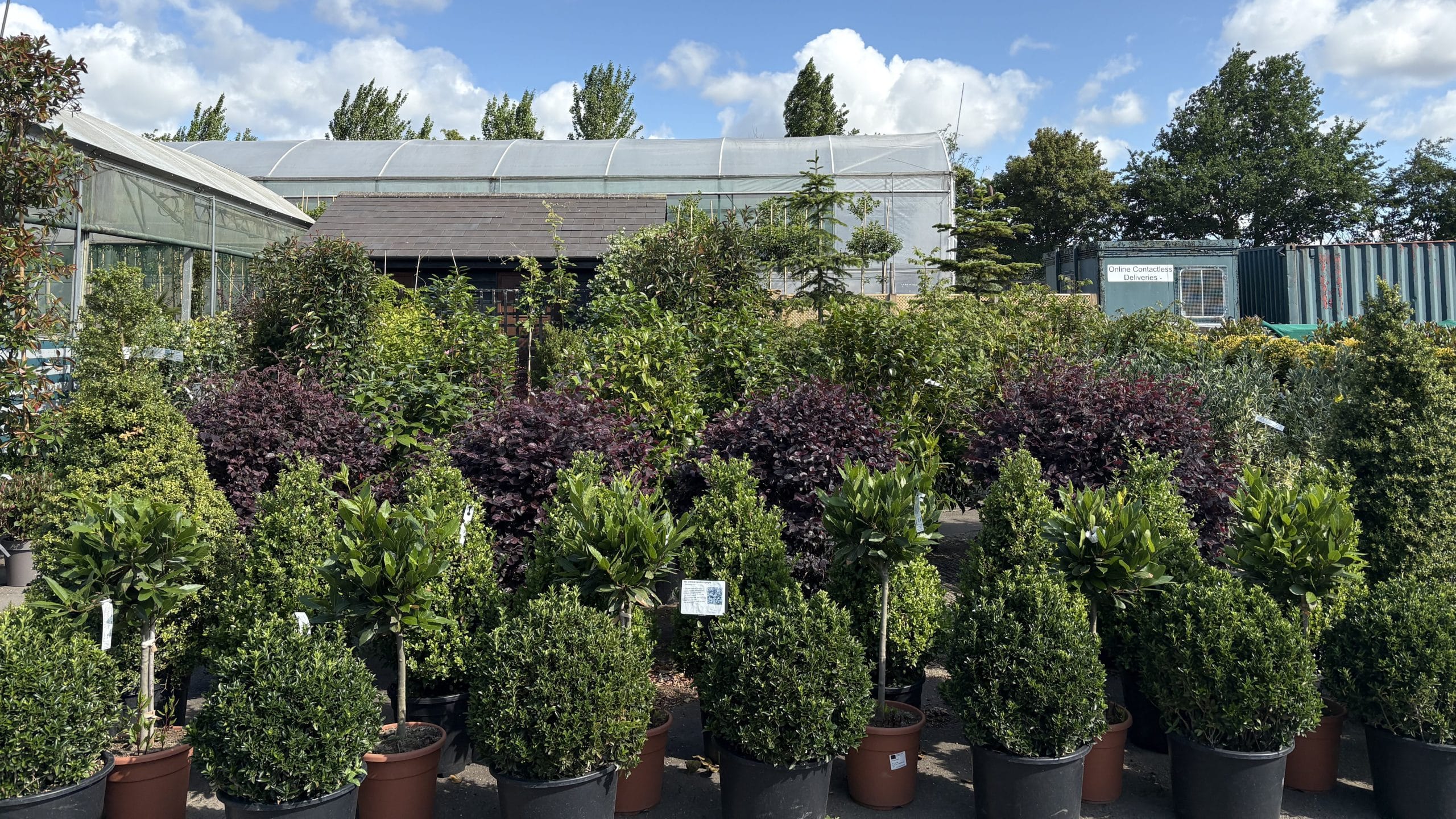
Yes, planting trees in summer is possible, in fact it can be a great time to do so! The key is to choose container-grown trees, and make sure that you provide consistent, appropriate aftercare!
Visit Us This Summer! 🌞
With trees now in full leaf, summer is an excellent time to visit our nursery. You’ll be able to see our deciduous trees and plants at their most vibrant. This makes it easier to plan enhancements for new or existing projects, visualise how they’ll look in your landscape, and select the ideal size, shape, and form.

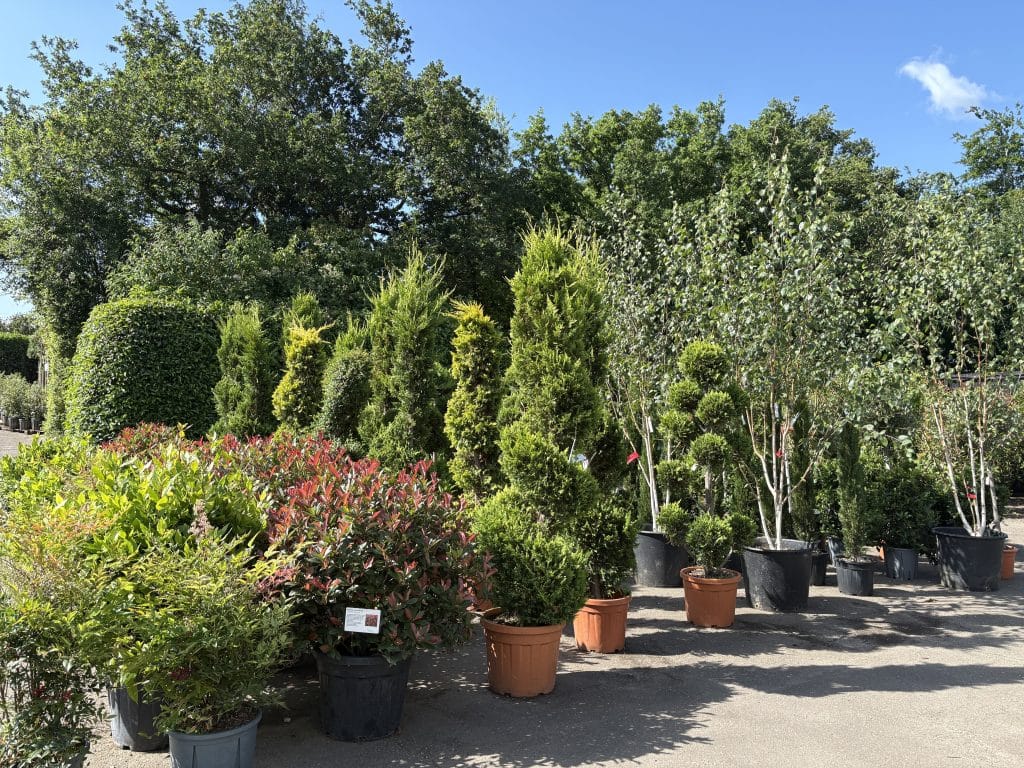
We’ve just restocked a beautiful range of half standard trees, climbers and small shrubs.
Half standard trees are similar to standard screening trees, but with shorter stems (around 1 meter tall). This form brings dimension to gardens and creates opportunities for underplanting. It also means that half standards can effectively establish an elegant raised hedge when planted in row along a low wall! They can also be used for:
1. Raised beds. Standard trees often leave gaps above fences when planted in raised beds. Half standards solve this by keeping foliage at the perfect height.
2. Screening around a seating area. With their dense crown and short stem, half standards offer eye-level screening. This is ideal for seating areas that need privacy without blocking light.
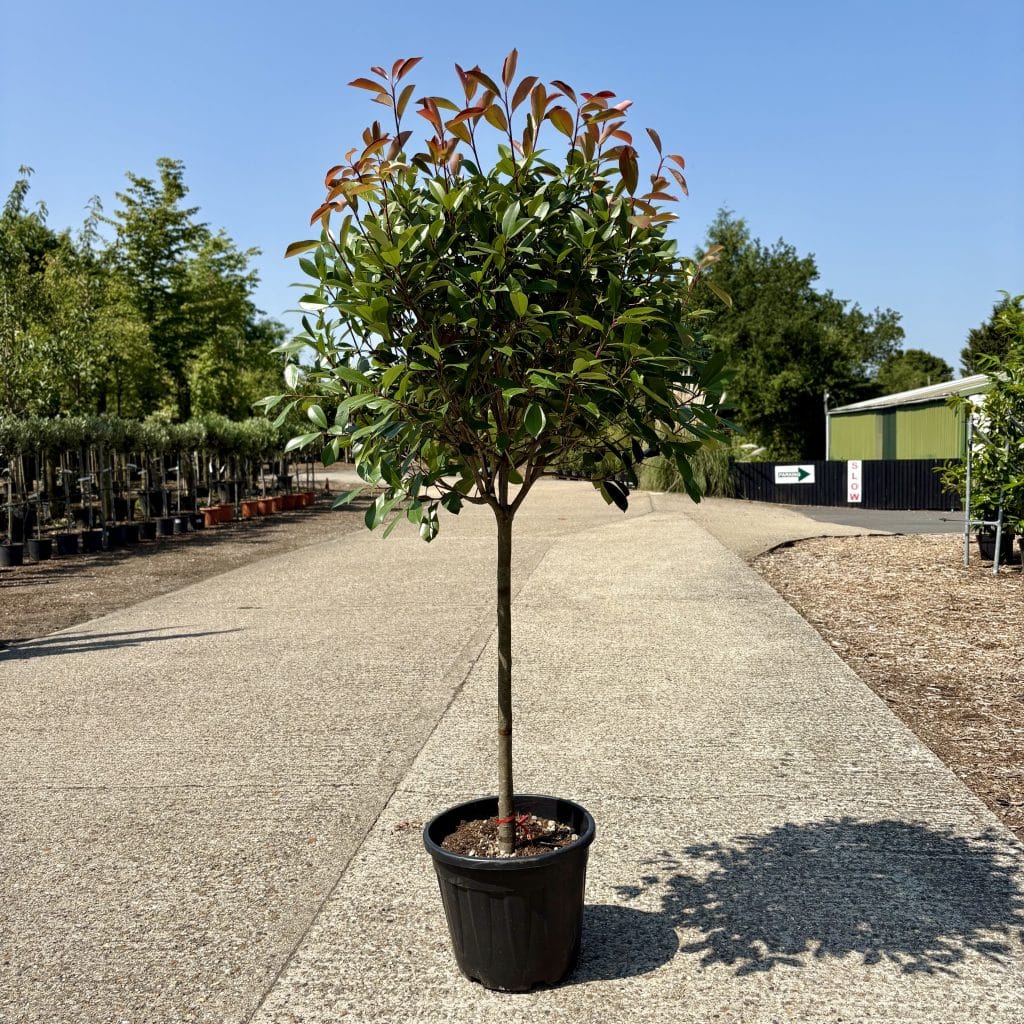
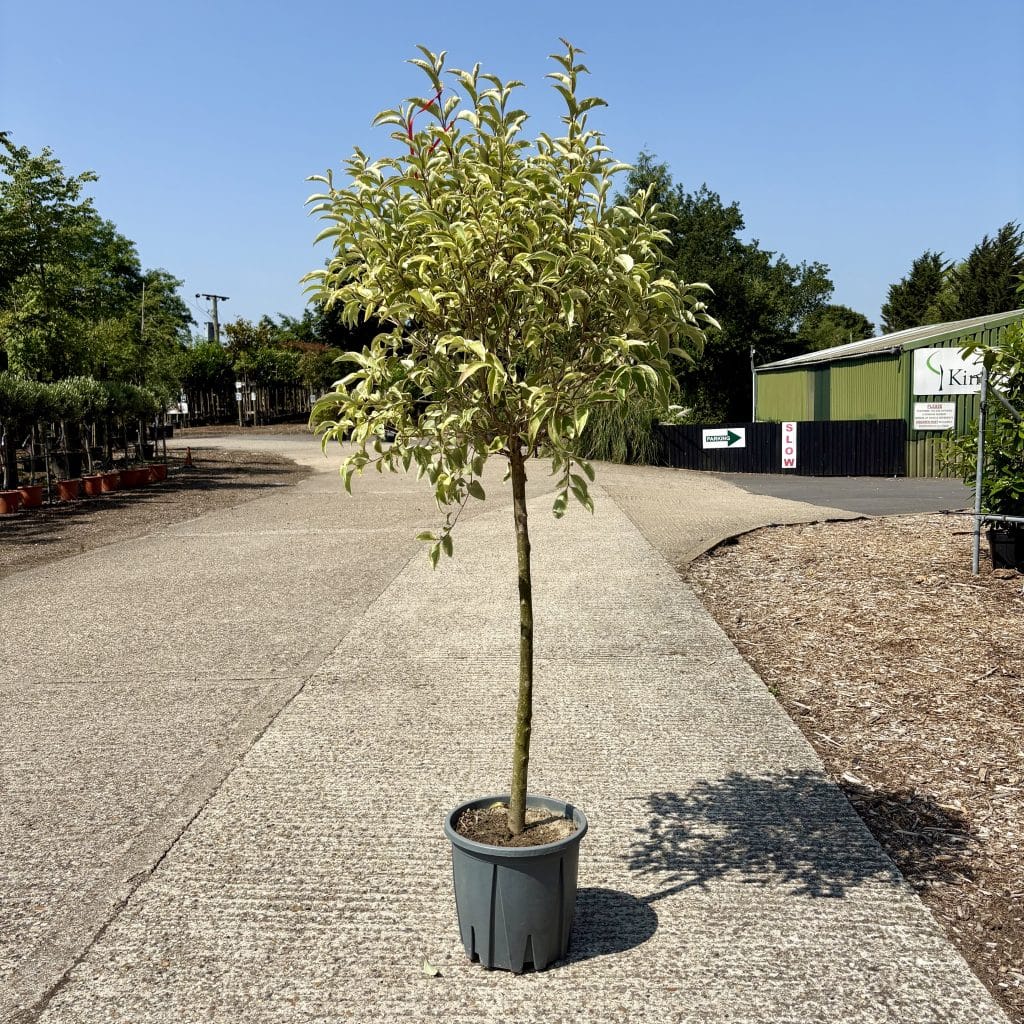
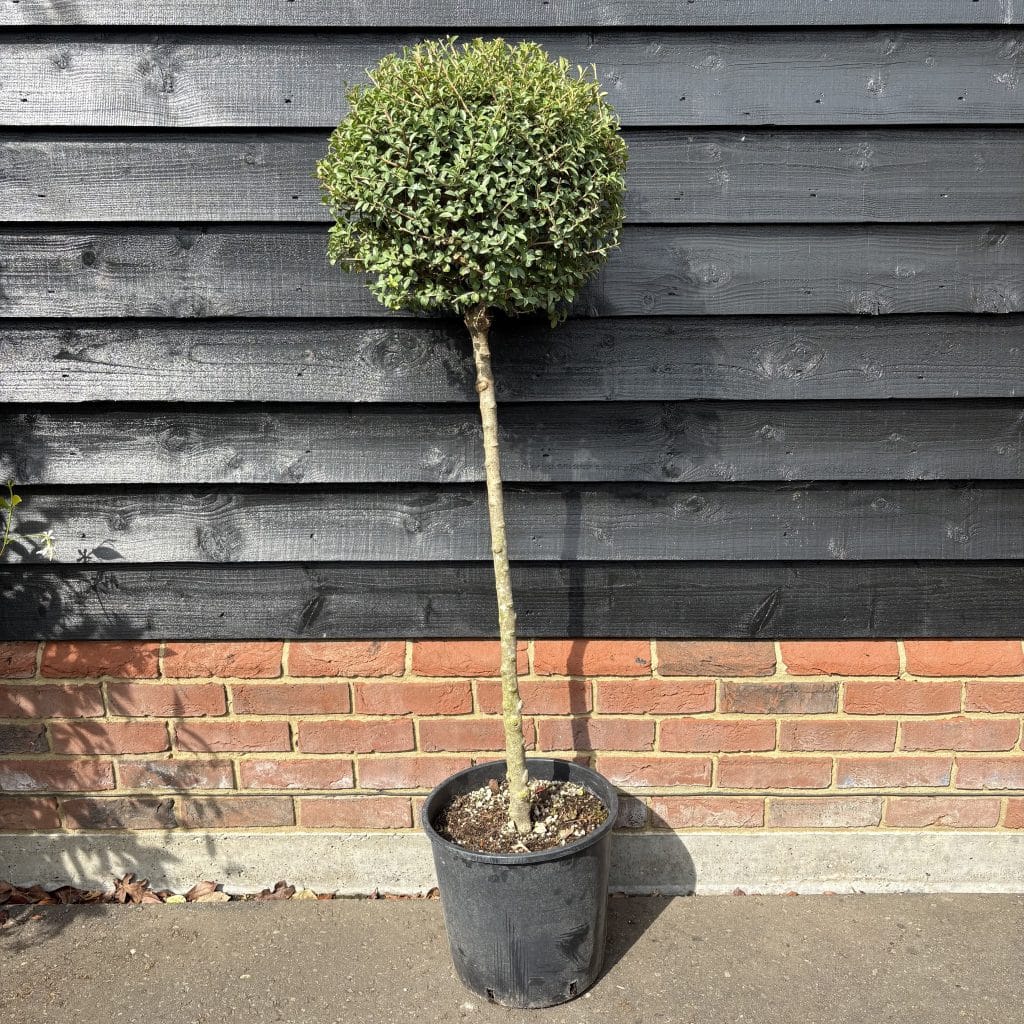
Climbers, like Jasmine, are a fantastic choice for adding visual interest and a delightful fragrance to your garden, especially during the warm summer evenings!
Our Jasmine climbers are perfect for training on a trellis to cover walls and fences, or for gracefully growing over an arch or pergola to add vertical appeal. We also offer Jasmine espaliers, which are expertly trained onto an 80cm x 120cm frame. These plants are ideal for planting against a trellis or wall, quickly creating an attractive and dense covering.
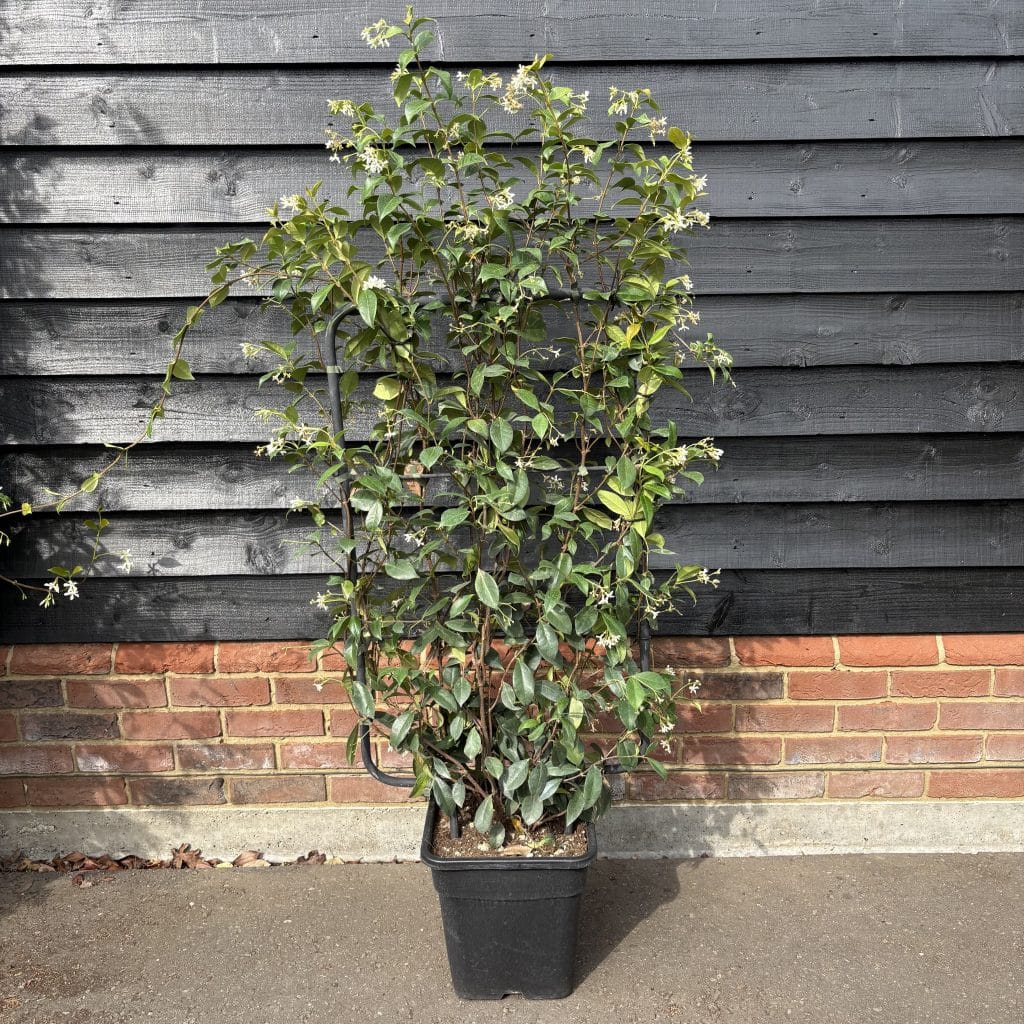
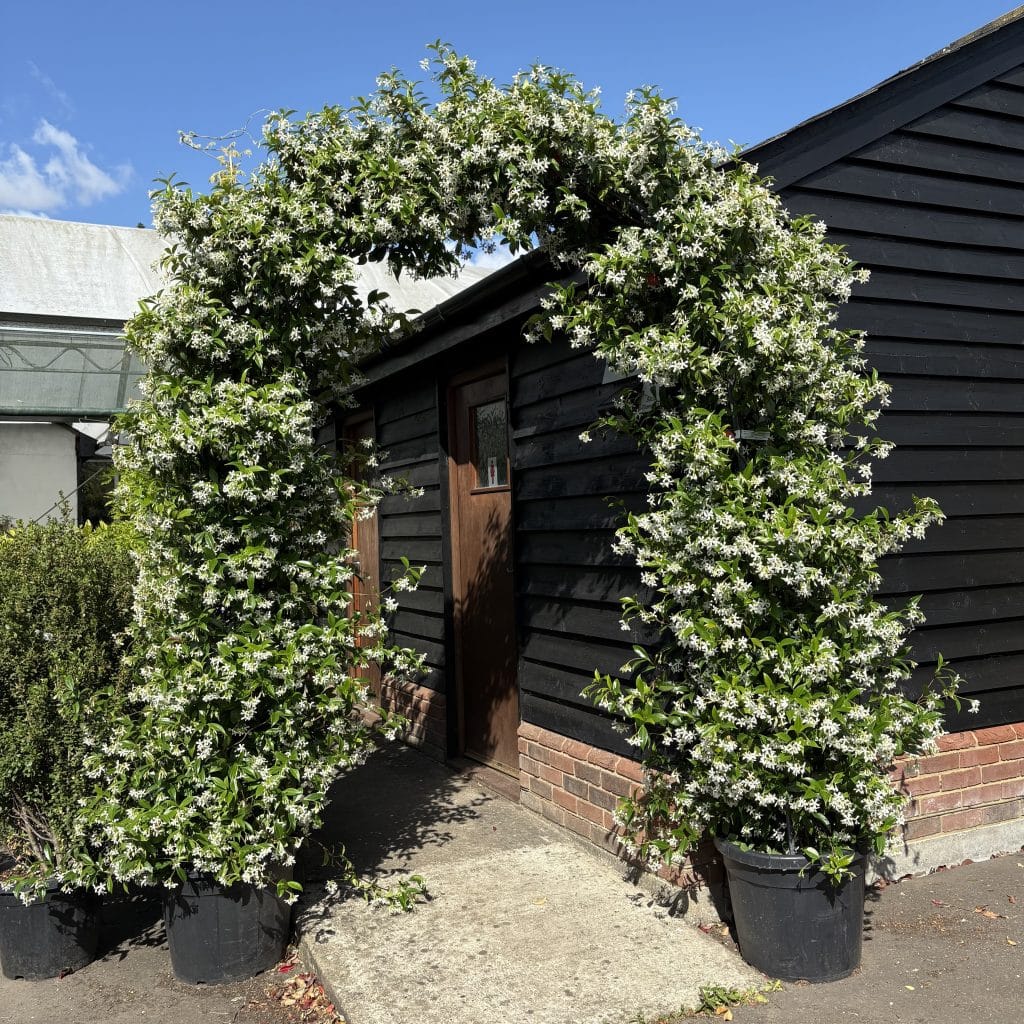
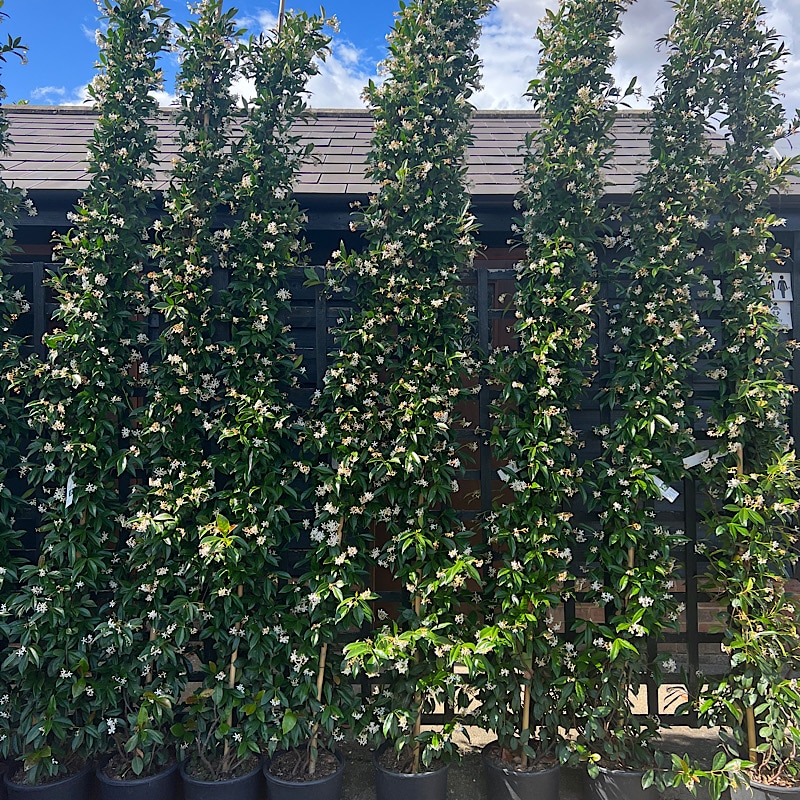
Shrubs provide year-round interest and are essential for garden structure. We stock a variety of:
Deciduous shrubs that change beautifully with the seasons.
Evergreen shrubs that are great for winter colour, privacy, and year-round foliage.
One of our favourite shrubs for adding summer interest is Agapanthus. This evergreen plant produces striking, tall flower spikes from mid to late summer. These spikes are topped with large, round clusters of flowers, making a wonderful impact in any garden design.
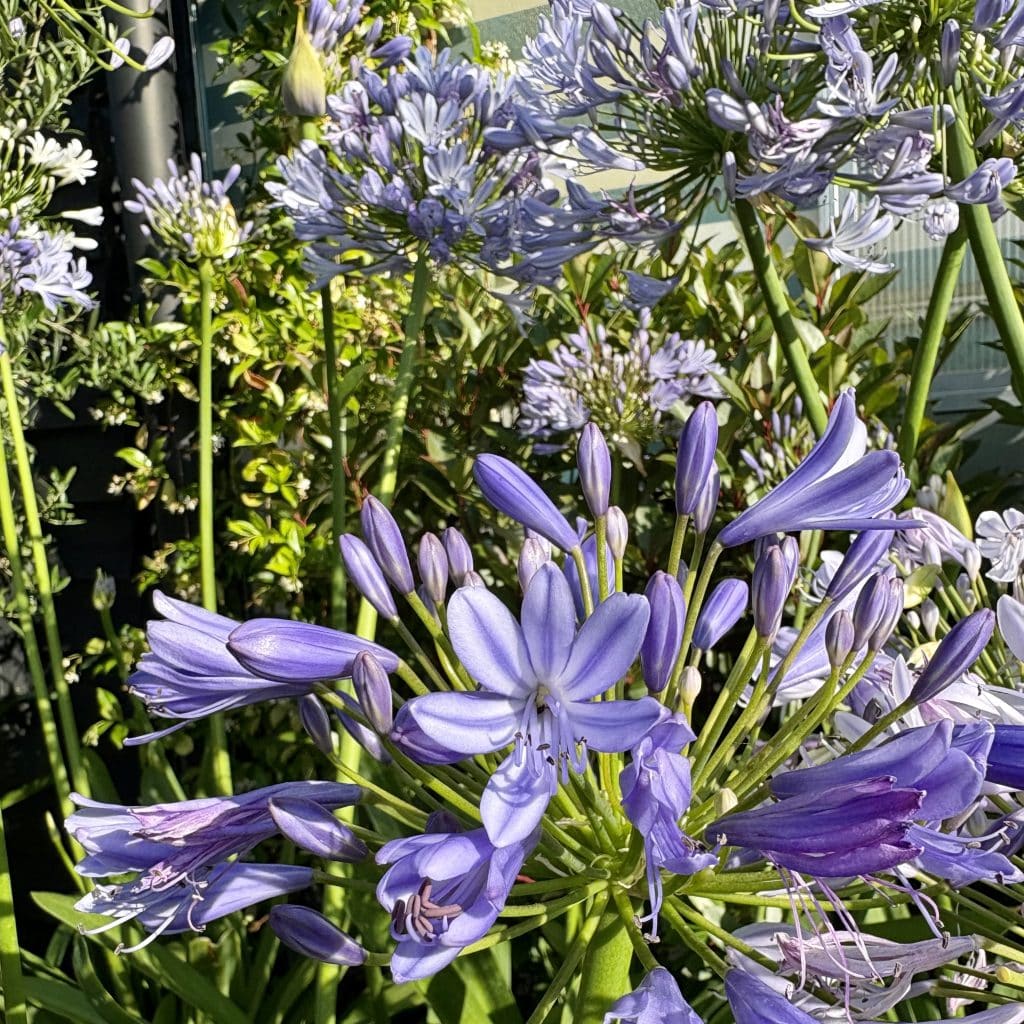
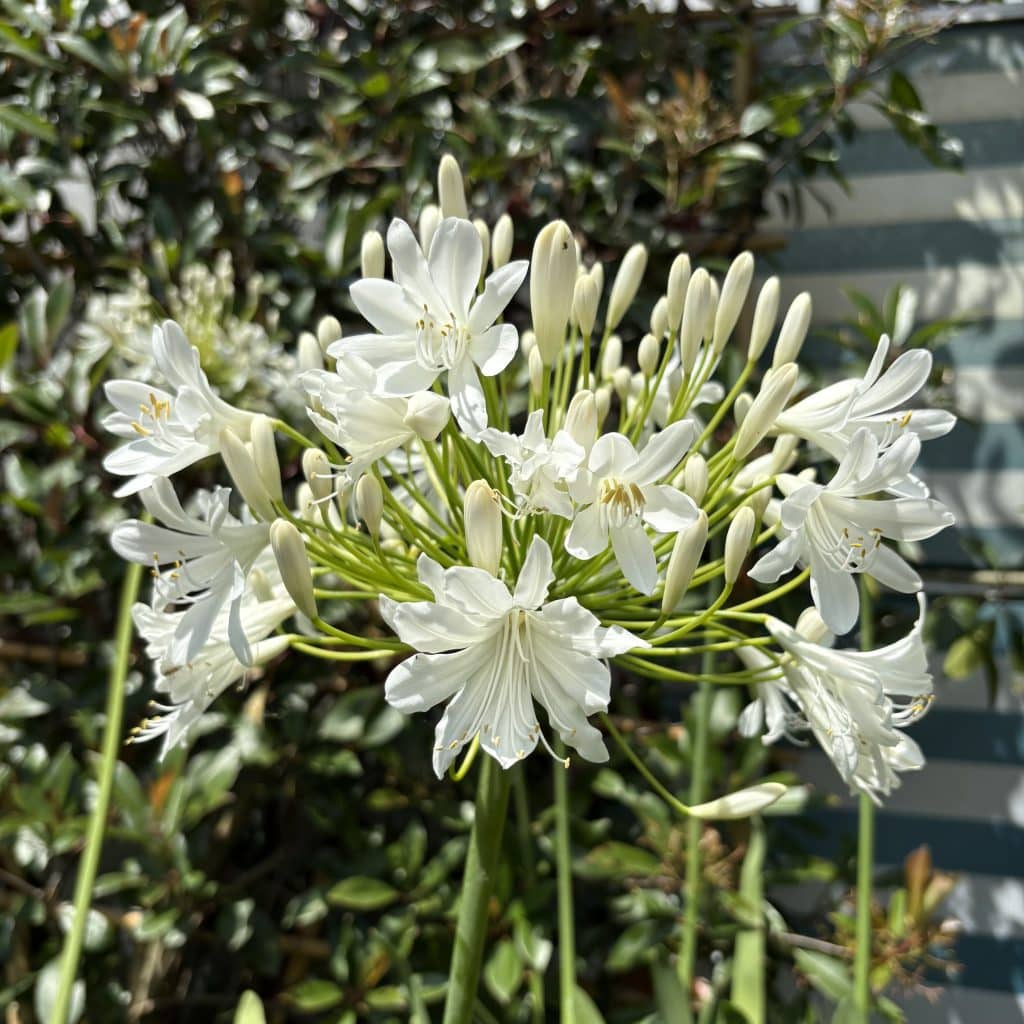
One of favourite deciduous shrubs are Hydrangeas. This is a smaller-sized, deciduous shrub known for its flower heads that are made up of many densely packed florets! Not only do these flowers add stunning interest to gardens, they can also can be used in flower arranging fresh or once they have gone over and dried.
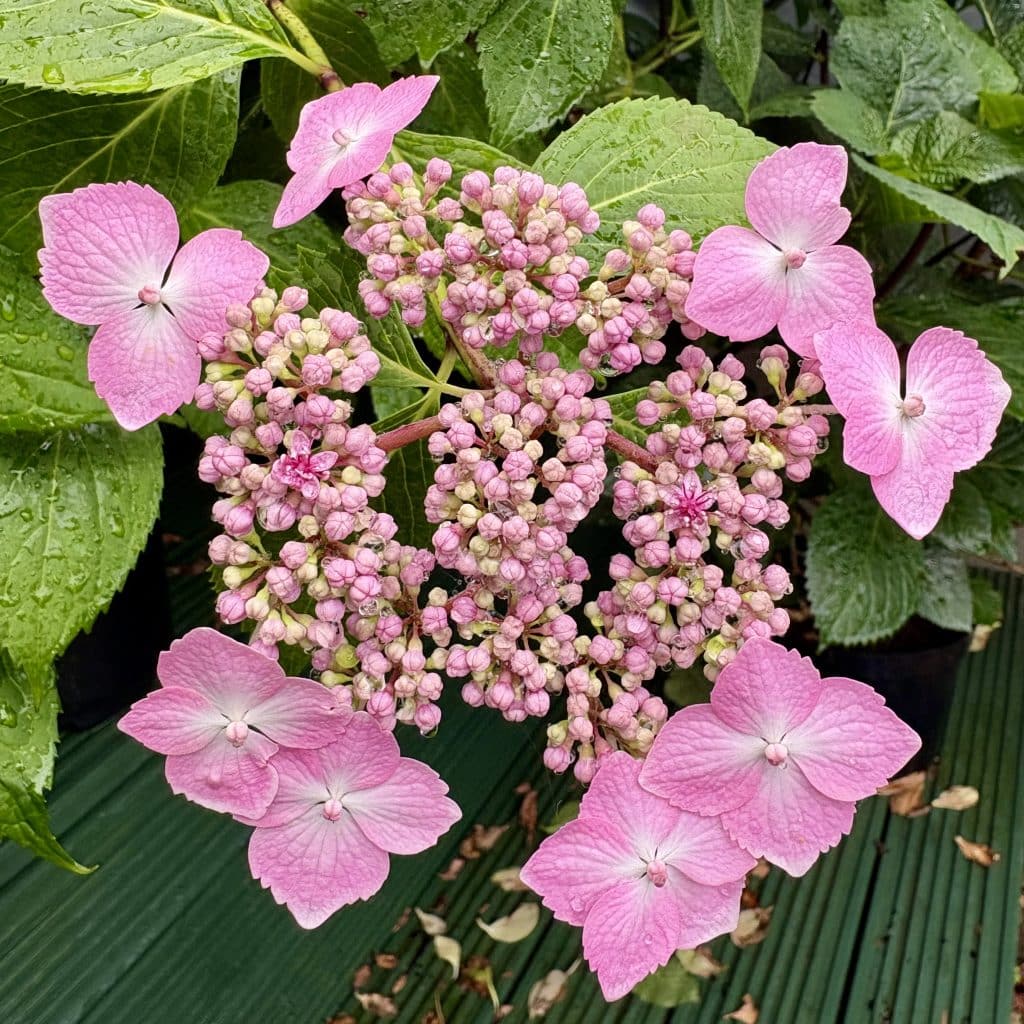
Maintaining a regular watering schedule is particularly important, especially if you’re planting trees in summer! Regular watering helps to keep the soil moist which is essential for the tree to successfully establish itself in its new location. For more detailed guidance on the best watering practices, including information on volume, frequency, and helpful accessories, please take a look at our article on watering newly planted trees!
We hope this has shown that planting trees in summer is possible, and with the right choices and aftercare, it’s a fantastic time to enhance your garden.
Feel free to visit us at the nursery to see our vibrant summer stock and get advice for your space. We’re always happy to help you bring your planting plans to life!
Pleached trees are one of our favourite ways to create instant and elevated privacy above fence lines. In this spotlight, you’ll see how pleached Photinia ‘Red Robin’ trees were used to completely transform a garden that was previously overlooked by neighbouring windows.
We recently worked with a client who needed an immediate and natural screening solution for their garden. The challenge was to block the view from an overlooking neighbouring property without compromising too much space.
Our client opted for pleached Photinia ‘Red Robin’ to create a continuous, elevated screen. This is a vibrant evergreen known for its striking red foliage and year-round appeal. These trees were the perfect choice for instant impact and lasting beauty.
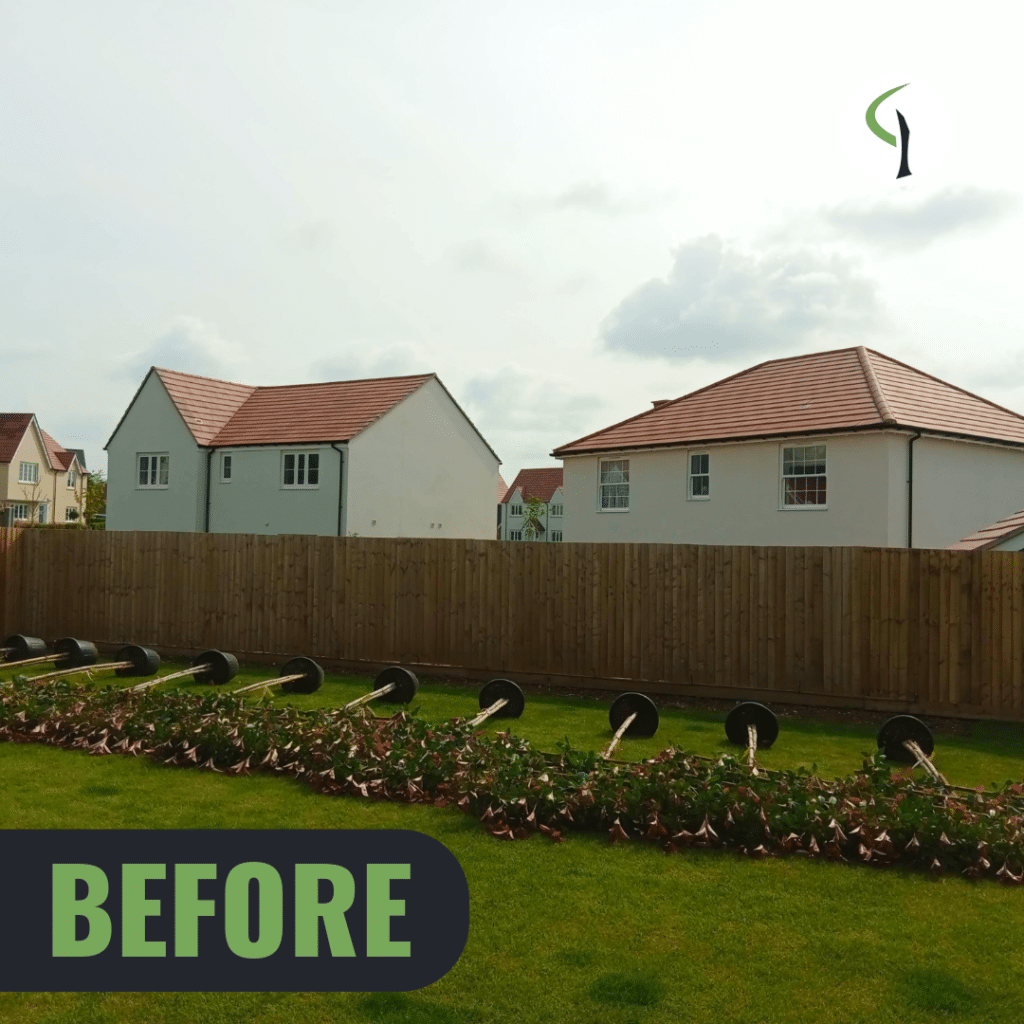

Pleached trees are trained with a clear stem and a flat framework of foliage above, making them ideal for:
1. Screening above fence lines: They provide privacy without taking up too much space in your garden.
2. Creating a formal, architectural look: Their structured form adds a sophisticated touch to any landscape.
3. Allowing for underplanting: The clear stem leaves ample room for other plants beneath the canopy.
For this project, we selected pleached Photinia Red Robin trees with 1.8m clear stems, which perfectly aligned with the top of the fence. Each of these trees featured 1.2m² frames. We carefully calculated the quantity needed to ensure that their frameworks touched, creating an immediate, continuous wall of foliage. As the trees grow, this foliage will merge, forming a dense, elevated hedge that provides both privacy and aesthetic appeal.
To ensure the best start for these trees, our planting team handled the installation. We used the double staking method, providing strong support and helping the trees establish quickly and securely.
We hope this has helped illustrate why Pleached Photinia Red Robin trees are an excellent choice for creating instant privacy with a touch of elegance. If you are considering screening solutions, we would be happy to help.
Visit us at our nursery in Rayne, Essex to hand-select your trees
Send us photos and measurements for personalised advice
Contact the King & Co team with any questions about planting, care, or design
Let us help you transform your garden with smart, stylish screening that lasts!
Read more:
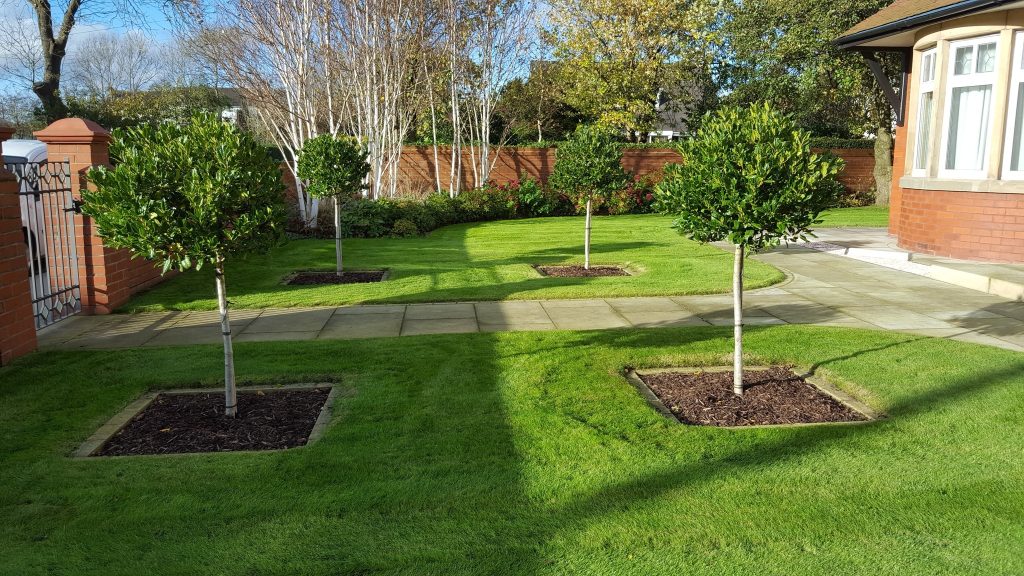
1. Versatility. Half standard trees feature a clear stem and a raised head of foliage. This form brings dimension to gardens and creates opportunities for underplanting. It also means that half standard can effectively establish an elegant raised hedge when planted in row along a low wall!
2. Maintenance. One of the practical advantages of half standard trees is their shorter stem (typically around 1 meter). This height makes the canopy more accessible for pruning, allowing them to be easily shaped and maintained at a desired size.
3. Tolerance to container planting. All of our half standard tree varieties are suitable for growing in large containers. This makes them a popular choice for positioning either side of a doorway.
Photinia Red Robin is a fantastic evergreen variety that brings vibrant colour to gardens and boundaries throughout the year. This popular plant showcases striking red young foliage that matures into a glossy green, providing continuous visual appeal. In addition to its colourful leaves, the Photinia Red Robin produces an abundance of beautiful white flowers typically in April and May, adding another layer of seasonal interest.
It’s an excellent choice for anyone looking to introduce consistent colour and life to their outdoor spaces!
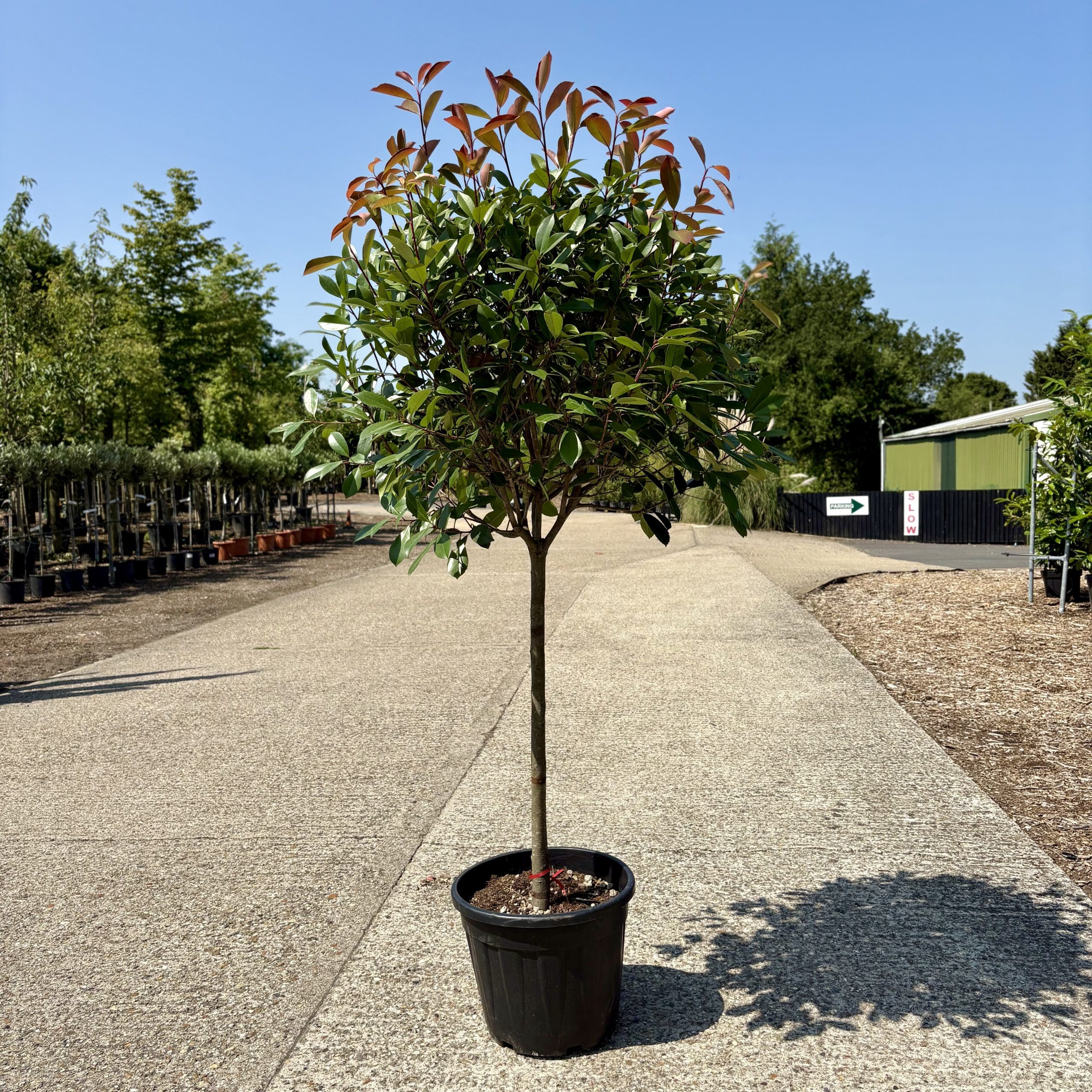
Euonymus japonicus ‘Aureomarginatus’ has a dense, upright habit and striking dark green leaves edged with a vibrant yellow margin. It’s an excellent selection for adding consistent colour and structure to any garden or landscape!
Olive trees make a wonderful addition to Mediterranean or contemporary gardens. Their slender green leaves can be pruned to maintain a neat, round form, or allowed to grow into a larger spherical shape or a delightful small tree.
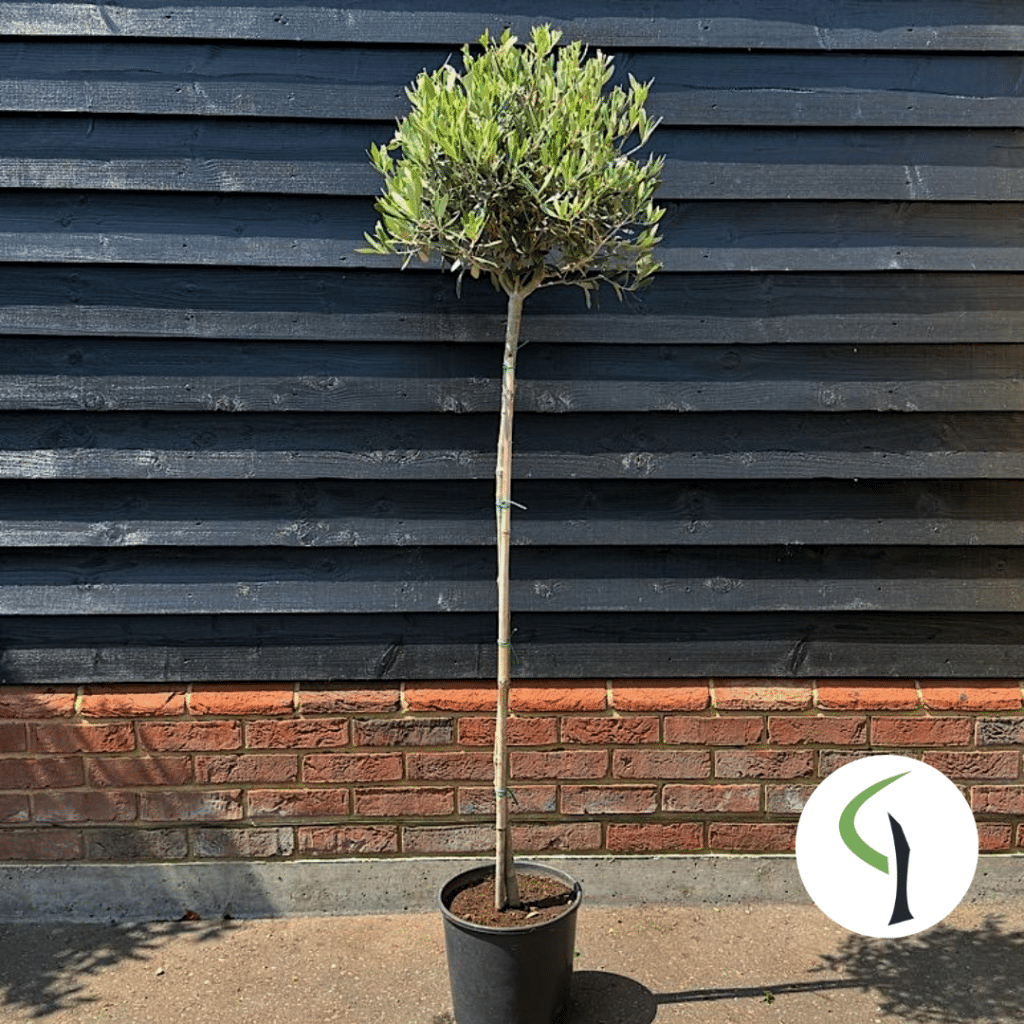
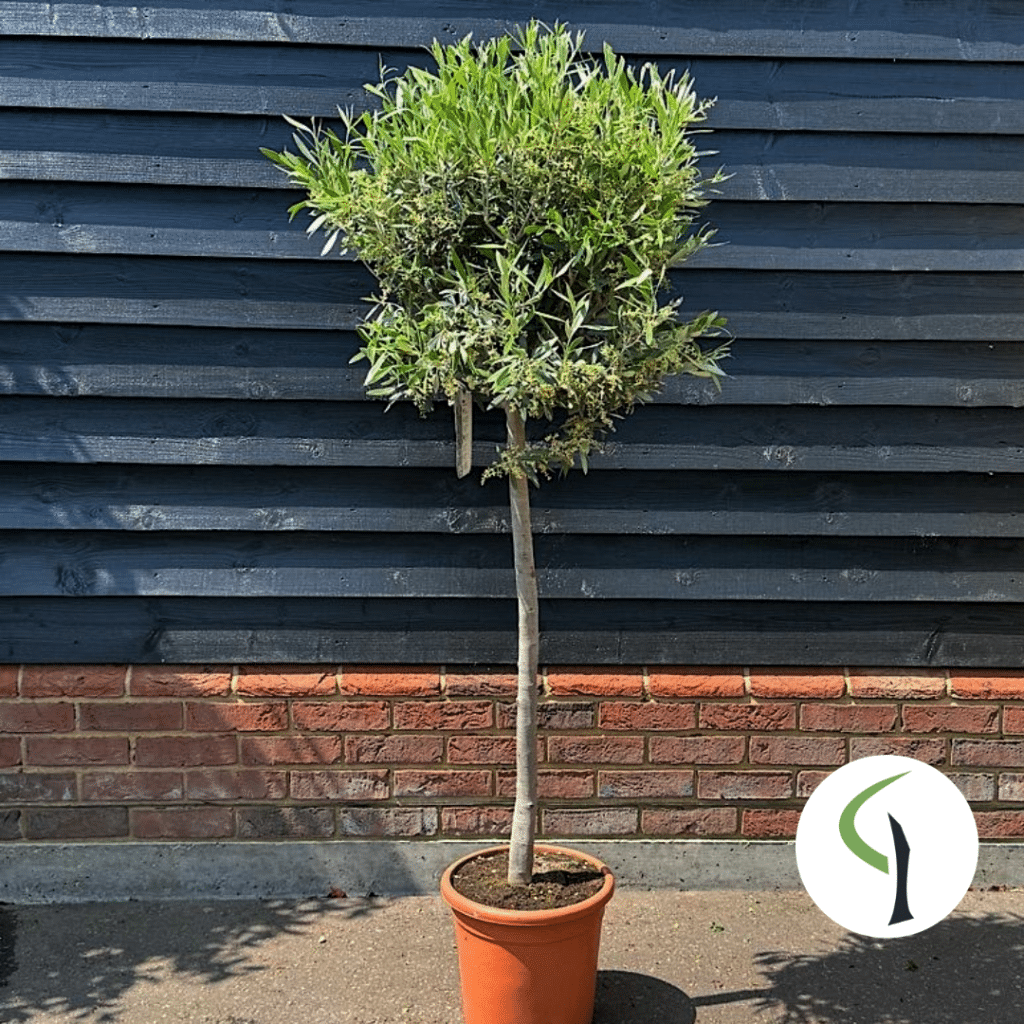
Seen here in 1/4 standard form, this batch of Bay trees feature an even shorter stem of 40cm. This makes them exceptionally compact, while still offering an excellent way to introduce height and visual appeal to smaller garden spaces. Similar to 1/2 standards, these trees are also ideal for planting as striking features on either side of an entrance or path. They are also ideal for establishing a raised hedge along a low wall.
Like the Bay, this 1/4 standard Ligustrum has a 40cm clear stem. Ligustrum can achieve the same effect as all of the other mentioned trees, with the added benefit of a dense and compact growth habit. This characteristic allows it to be trimmed into very neat and formal shapes, making it an excellent choice for formal garden designs!
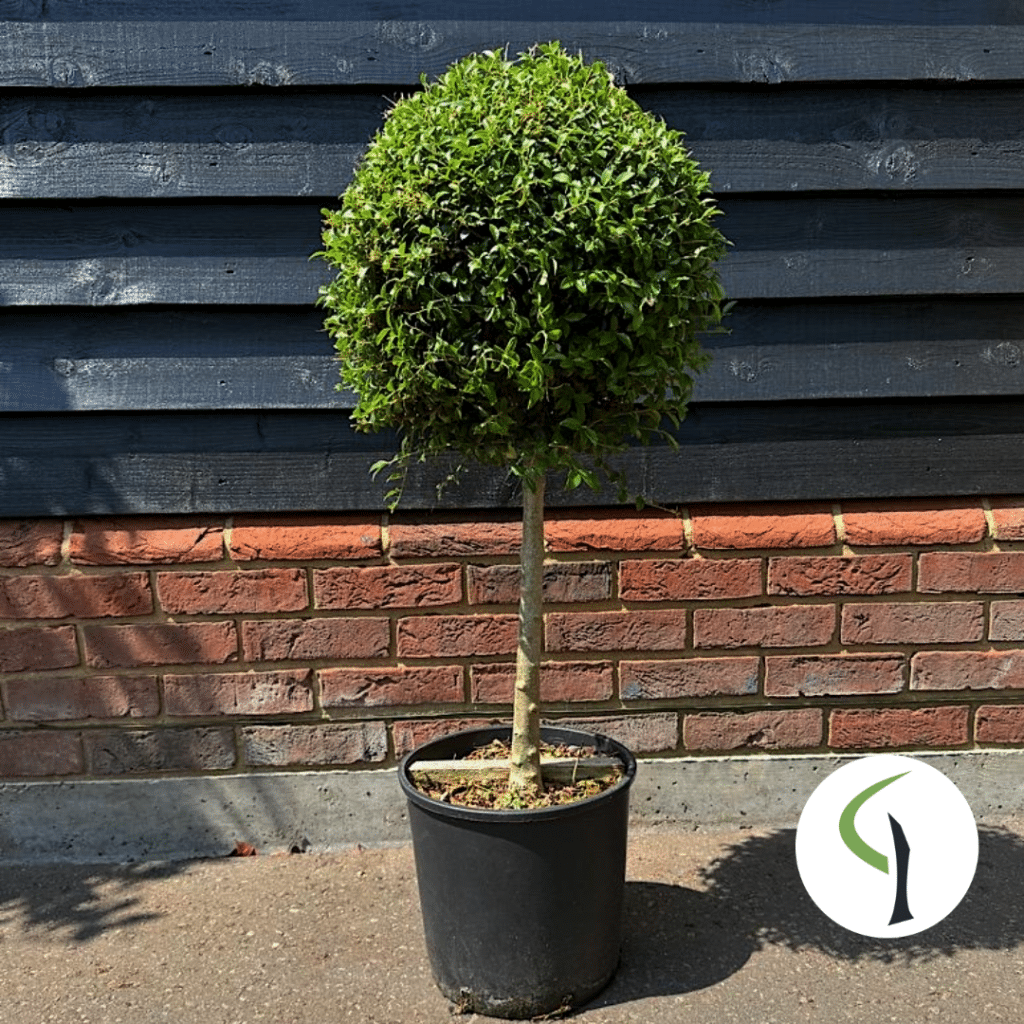

The Ligustrum’s naturally compact growth habit makes it ideal for trimming into eye-catching designs, so we also offer Privet Pom-Pom trees, which feature 3-4 perfectly shaped balls of foliage. These plants are an excellent choice for anyone looking to create a truly distinctive feature in their garden!
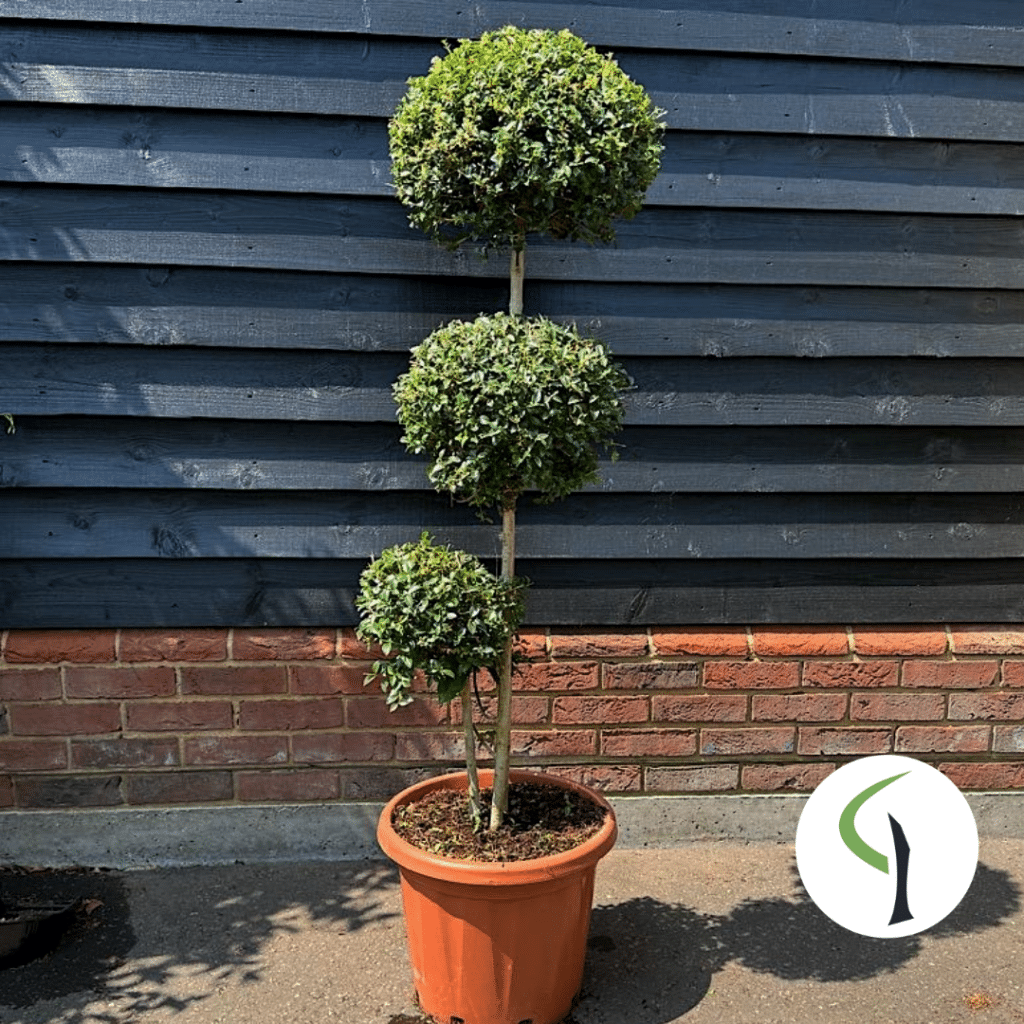
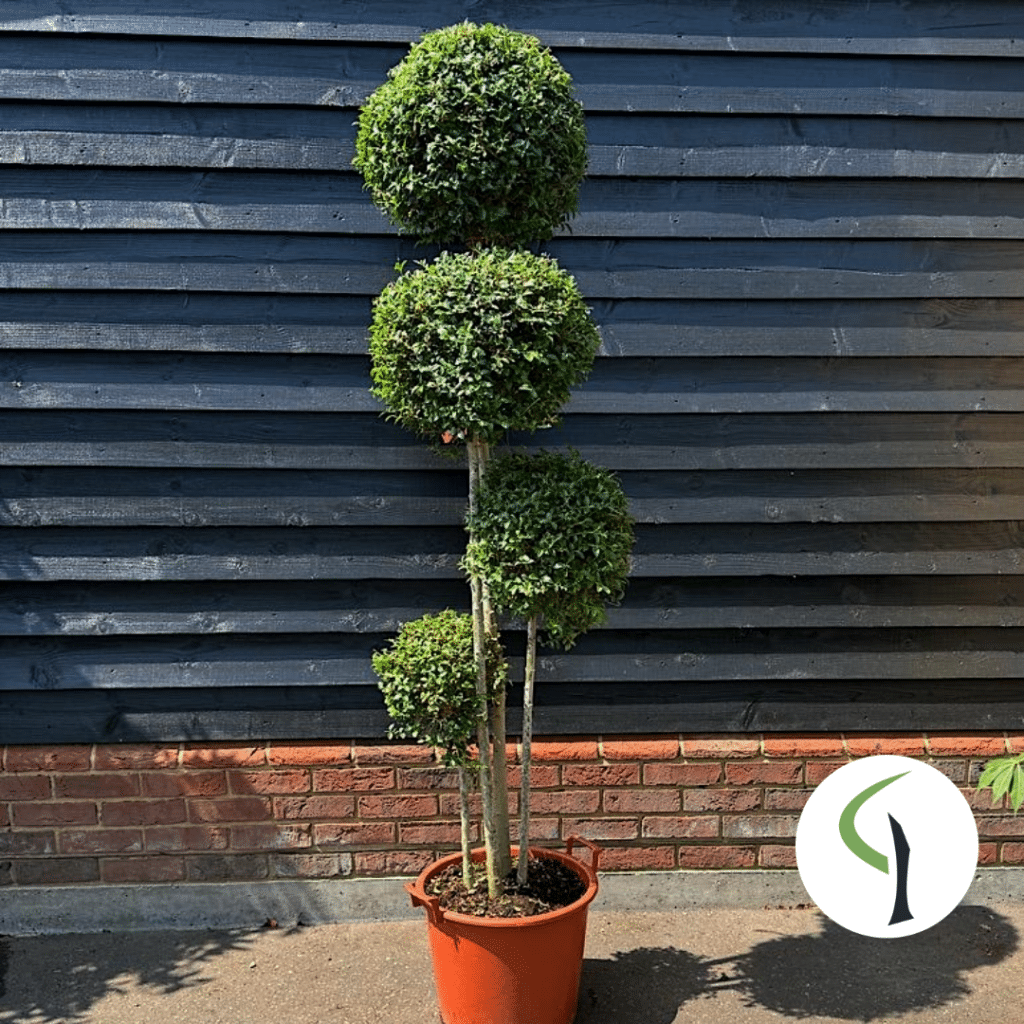
Hopefully this helped to show how quarter and half standard trees are a great option for small gardens!
Bare root trees can be planted from November to March. Container grown trees can be planted all year round. Watch our video guide on how to do so.
As a guide, we recommend giving each tree 5 litres of water every other day during the growing season. The water should be directed at the base of the trunk.
5 Litres is a good starting point to make sure that the ground stays moist, if the soil starts to become saturated or dry adjust the amount as required.
We can offer our planting service if you are local to the nursery. Planting prices are dependent on the size of the pot. Please contact us if you would like a quote.
While new build gardens may have limited space, they are a blank canvas that provide homeowners with the wonderful opportunity to create a garden that truly reflects their personal style. One question we frequently encounter is, “What trees are best for new build gardens?”.
To help you find the ideal tree and preventing overcrowding, we’ve put together some advice on how to select the right tree for your space. We’ve also compiled a list of some of our favourite trees for smaller gardens. In the article below, you’ll find information regarding their expected mature height and spread, as well as any unique or notable characteristics that make them excellent choices!

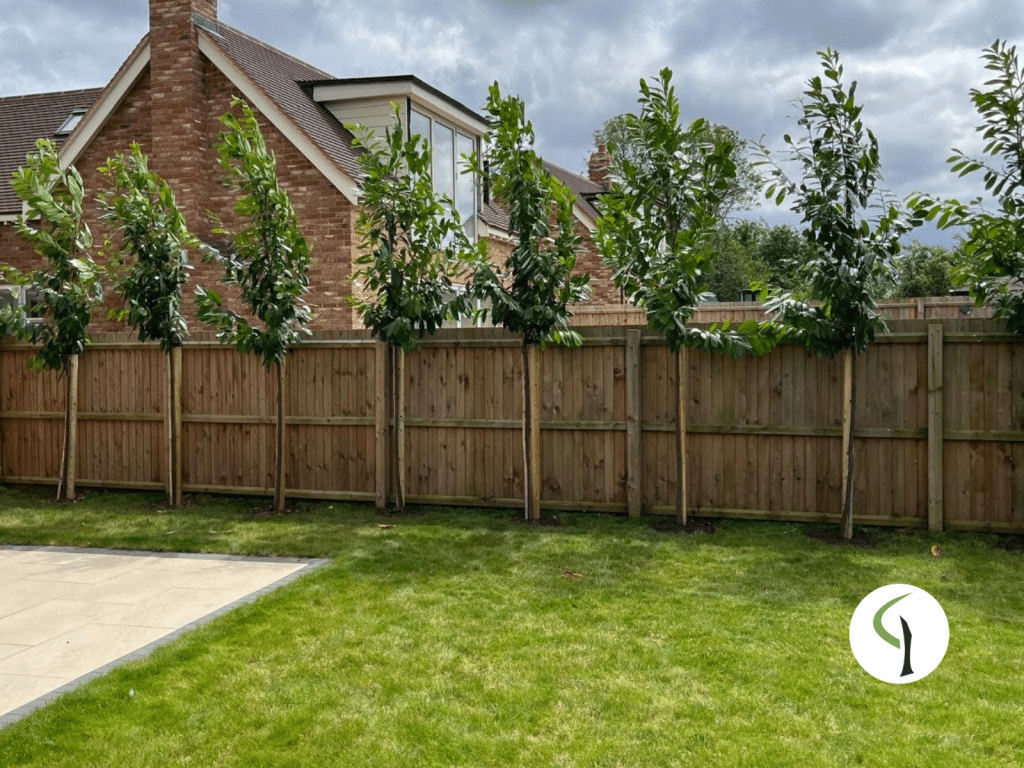
Understanding your goals for the tree is just as important as considering its mature size. As you plan your planting, it’s beneficial to consider a few key objectives. For instance, are you hoping to enjoy the changing seasons in your garden, establish a natural screen for added privacy, or perhaps create a welcoming habitat for local wildlife?
Reflecting on these aspects beforehand will be incredibly helpful in making the right choice for your space. To assist you with this, we’ve organised the recommendations in this article into three specific categories: Seasonal Interest, Screening, and Wildlife.
If you’re considering a small tree that provides interest throughout the seasons, deciduous varieties are a fantastic option. These trees offer beautiful spring blossoms, lush green leaves during spring and summer, and lovely autumn colours. For those with smaller gardens, we particularly recommend Crab apples, Ornamental cherries, and Ornamental pears. These three varieties are all highly regarded for their attractive blossoms, foliage, and overall structure.
1. Malus ‘Street Parade’ – Exceptional spring blossom and attractive purple/red fruits from late summer through autumn. This tree has a distinct upright habit that matures into an oval shape, and it typically reaches 5-7m in height with a 4-5m spread.
2. Pyrus calleryana ‘Chanticleer’ – Great spring blossom, autumn colour, and a tidy upright form. Ornamental pear is relatively compact, reaching a mature height of 8-12m and mature spread of 3m.
3. Prunus ‘Snow Goose’ – Striking spring blossom, orange/red autumn foliage and a neat form. ‘Snow Goose’ reaches a mature height of 5-6m and a mature spread of 3-4m.
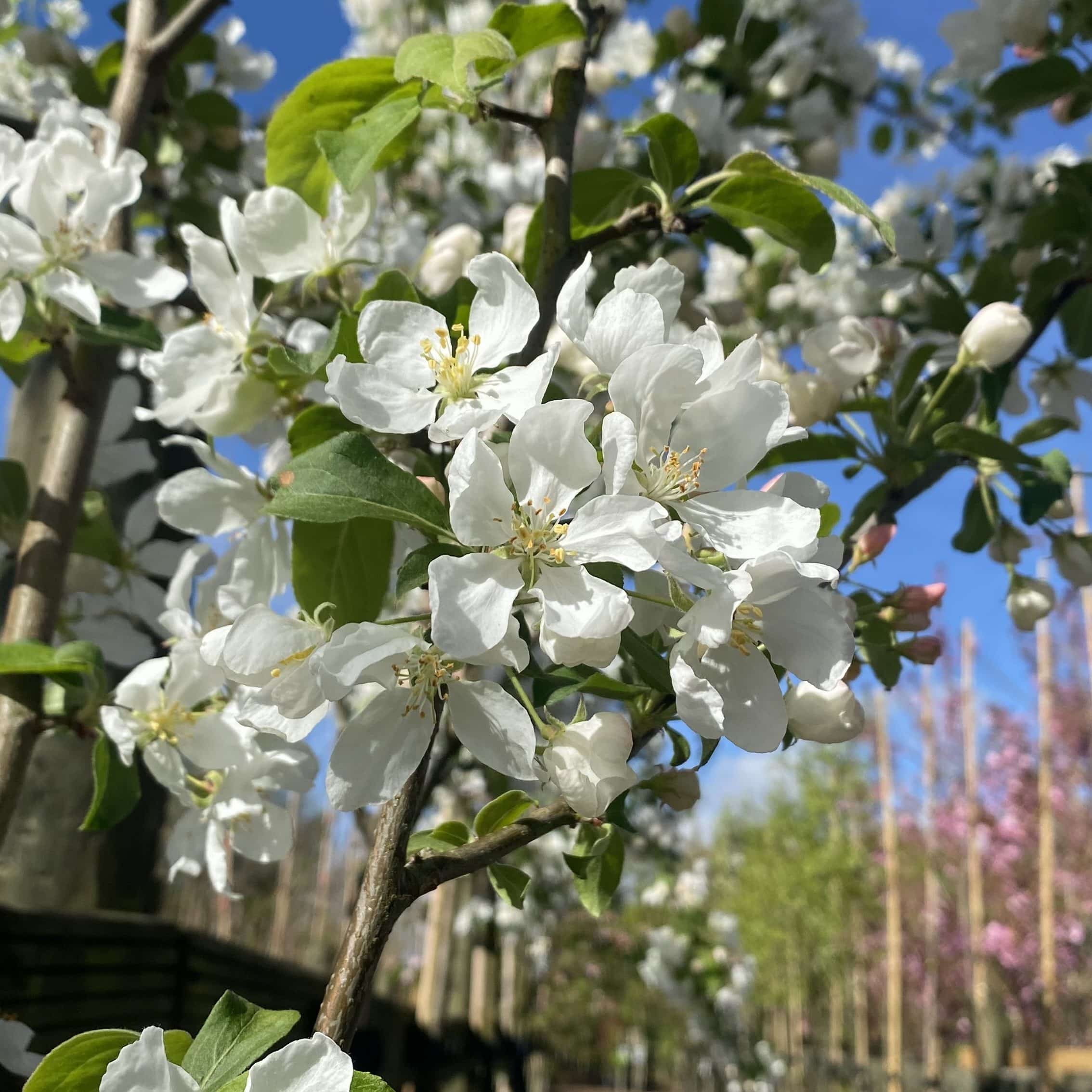
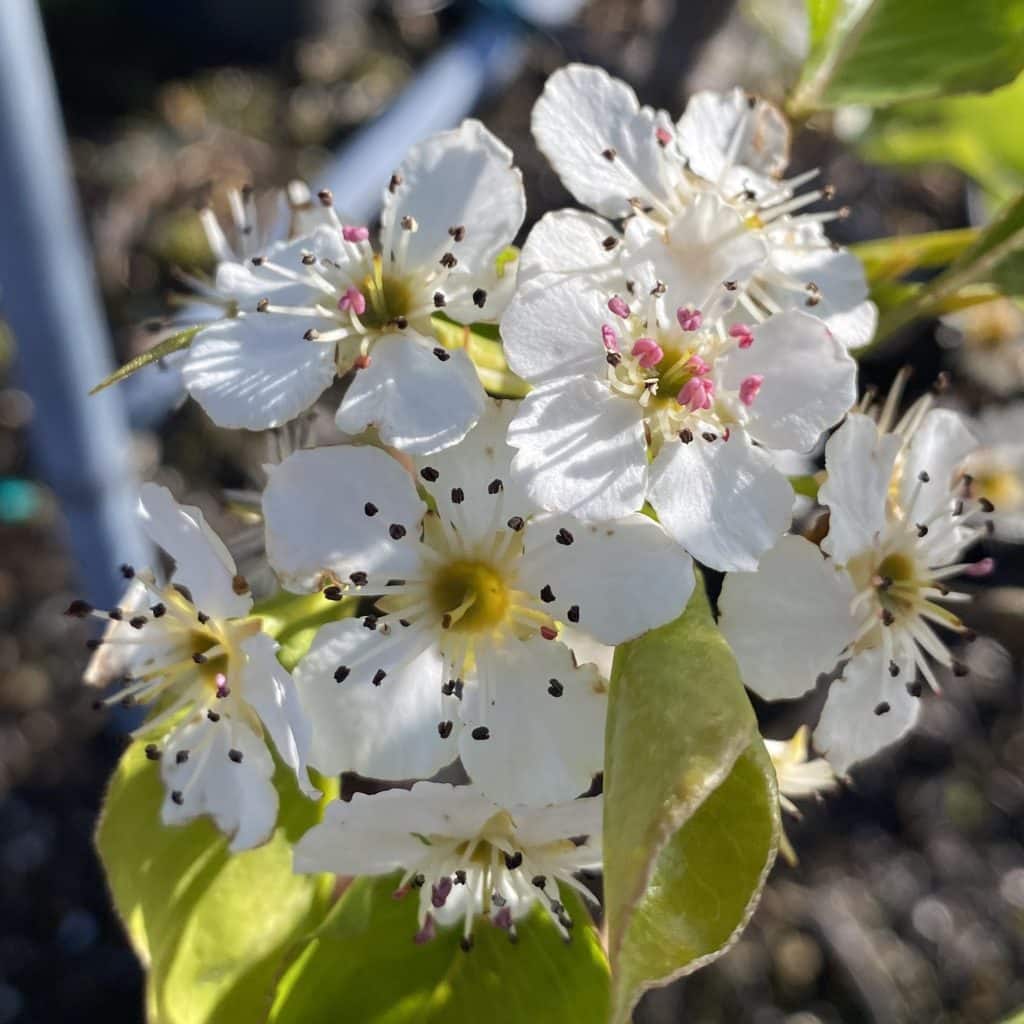
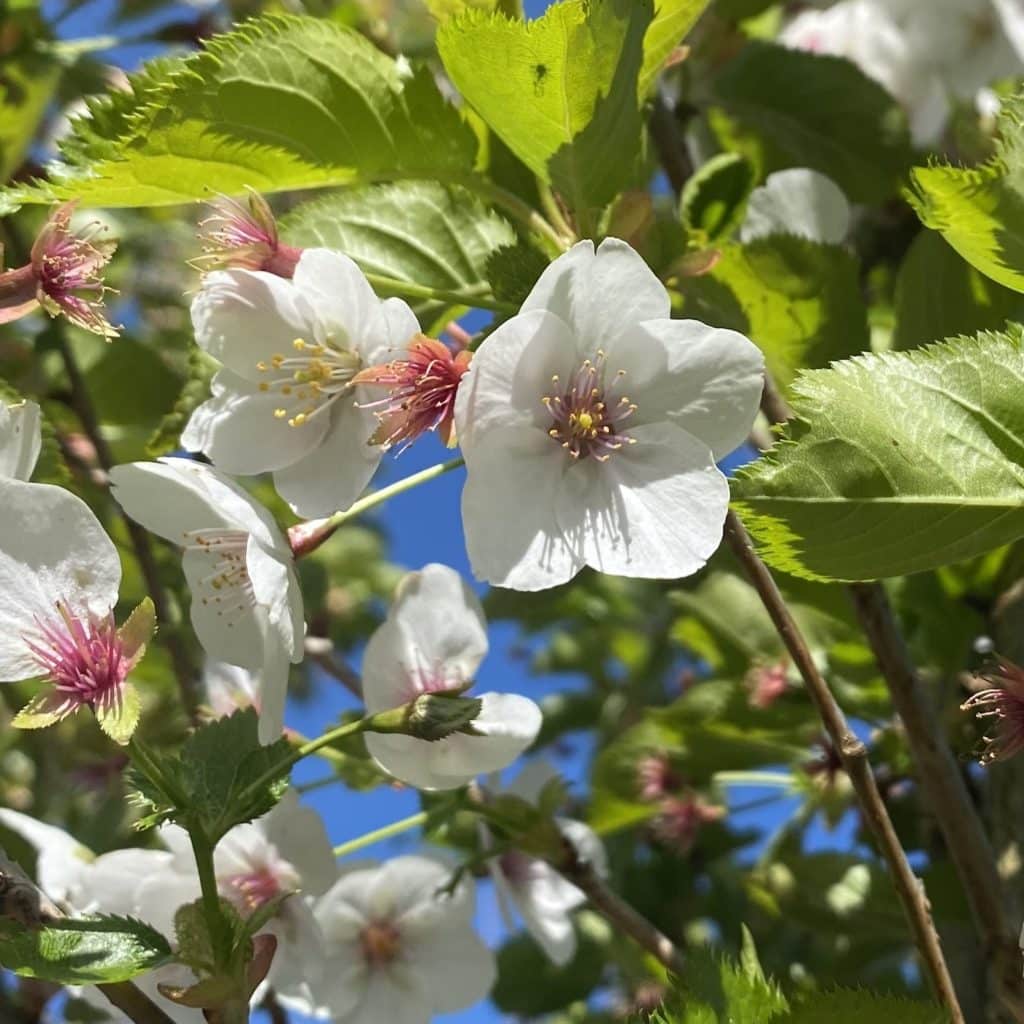
If your aim is to establish some privacy in your garden, evergreen trees are an excellent choice. Our most popular evergreen varieties for this purpose are the Photinia Red Robin, Cherry laurel, and Portuguese laurel. All three are shrubby plants that are grown as trees which means that they have a shallow, fibrous root system. Reaching a mature height of up to 8m, these standard trees can be planted in a row to form a continuous screen, providing uninterrupted privacy. Alternatively, they can be strategically placed as individual trees to obscure a specific view.
1. Photinia Red Robin – Foliage emerges red in spring and gradually hardens to a glossy green. It also has white flowers that appear in April/May. Red Robin reaches a mature height of 4-4.5m and a mature spread of 2.5-3m.
2. Prunus laurocerasus (Cherry laurel) – Large, glossy green leaves, masses of small white flowers in spring, and small red/black cherry-like fruits in autumn. Cherry laurel will get 5-7m tall and up to 3m wide.
3. Prunus lusitanica (Portuguese laurel) – Dark green leaves that emerge from purple tinted young stems, clusters of white flowers in spring, and small purple fruits in autumn. Portuguese laurel has a mature height of 6-8m and a mature spread of 2.5-3m.
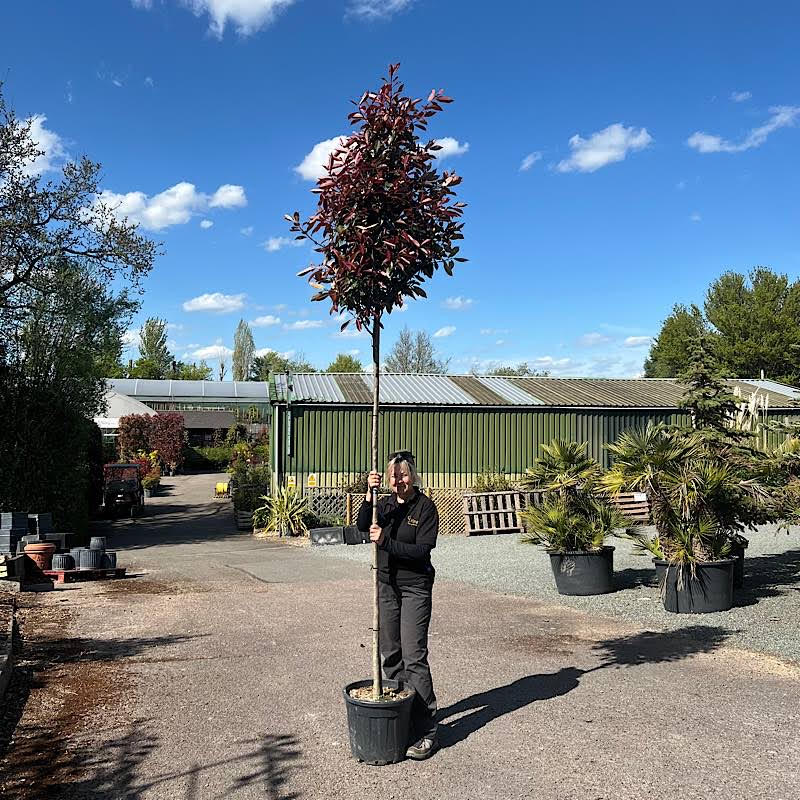
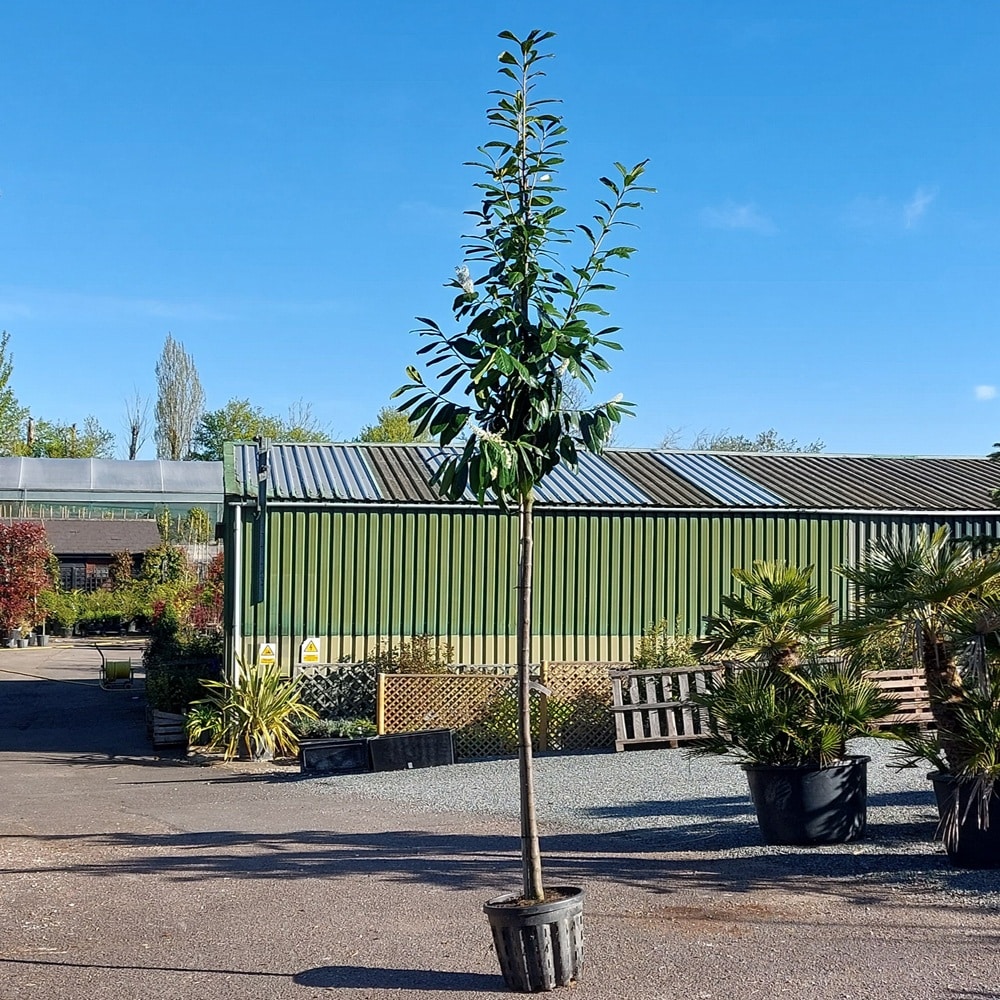

If you’re interested in adding a small tree to your garden that also benefits local wildlife, we recommend considering trees that are known for their attractive blossoms and berries or fruits. These trees not only provide visual interest throughout the seasons but are also excellent for attracting birds, bees, and other important pollinators to your outdoor space. Some of our top choices for this purpose include Amelanchiers, Crab apples, and Hawthorns.
1. Amelanchier lamarckii – Starry white blossom loved by pollinators, edible berries for birds (and humans), and brilliant orange-red foliage. Reaches a mature height of 5m+ and a mature spread of up to 3m.
2. Malus ‘Rudolph’ – Rich pink blossom that attracts bees, small crab apples for birds and foliage that changes colour throughout the seasons. This tree reaches a mature height of 5-7m and a mature spread of 4m.
3. Crataegus ‘Paul’s Scarlet’ – Masses of pink/red flowers in spring attract pollinators. This Hawthorn also bears sharp thorns on its branches which offer protection to nesting birds and other wildlife. ‘Paul’s Scarlet’ reaches a mature height of 4-8m and a mature spread of 3m.

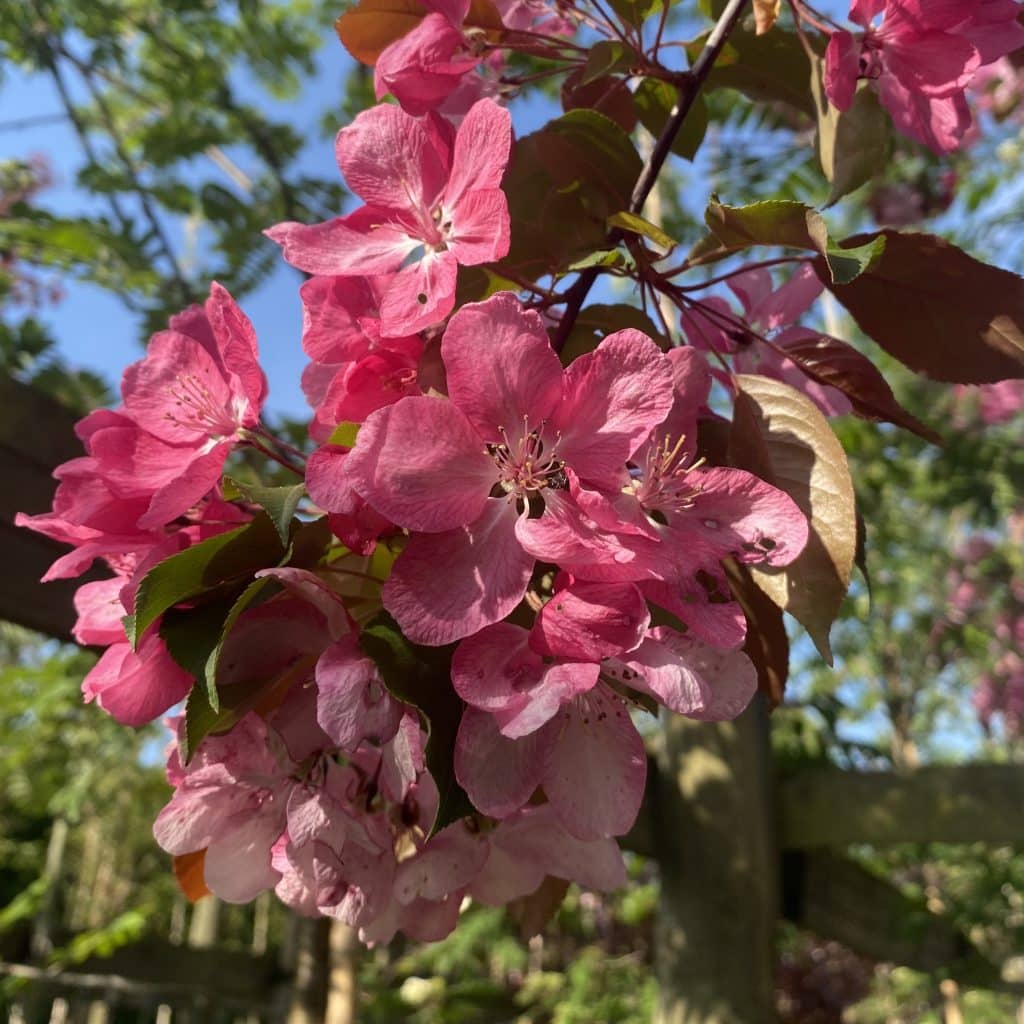
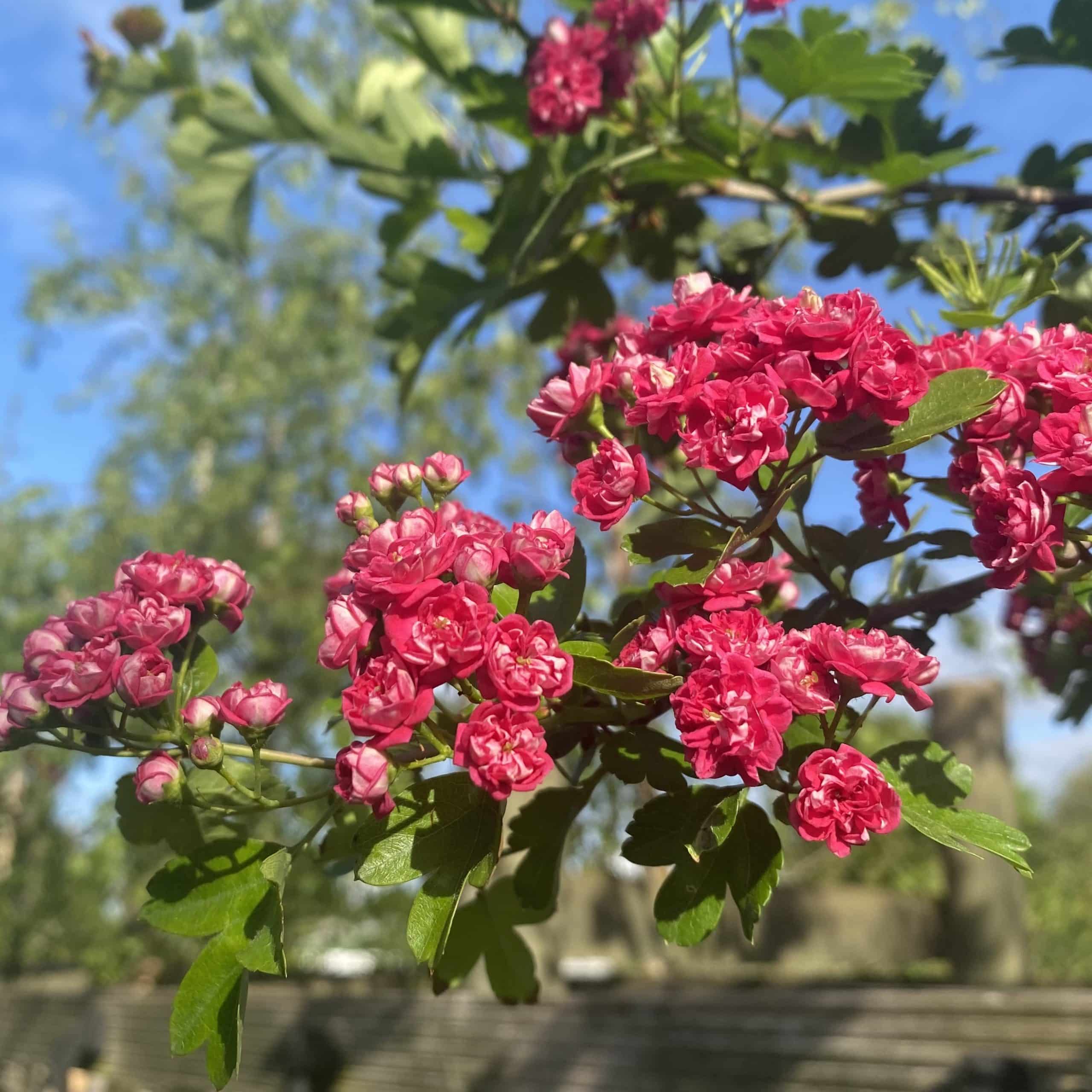
We hope this guide helped you to discover what trees are best for new build gardens. If you have any more questions please contact us as we are always happy to help! Remember if you visit our nursery in Essex you can even pick you own trees!
Bare root trees can be planted from November to March. Container grown trees can be planted all year round. Watch our video guide on how to do so.
As a guide, we recommend giving each tree 5 litres of water every other day during the growing season. The water should be directed at the base of the trunk.
5 Litres is a good starting point to make sure that the ground stays moist, if the soil starts to become saturated or dry adjust the amount as required.
We can offer our planting service if you are local to the nursery. Planting prices are dependent on the size of the pot. Please contact us if you would like a quote.
Now that you’ve planted your new trees and hedging, you might be considering the best ways to care for them. You may be asking yourself whether you need to add feed to newly planted trees, what their watering requirements are and what other maintenance might be necessary to keep them thriving.
Applying a feed can significantly improve your soil quality when planting your new tree. This will help your new tree establish itself more effectively, lowering the risk of failure and reducing potential issues in the future.
Adding rootgrow to the base of the planting pit during installation helps encourage a robust root system and lessen transplantation shock. It also aids in developing a secondary root system, enabling your tree to absorb nutrients from the soil more efficiently.
Mixing a slow-release fertiliser into the backfill at planting time, and continuing to feed established plants, can give your soil a substantial boost by supplying essential nutrients. This helps with strong root development, and over time, can also enhance fruiting, flowering, and drought tolerance.

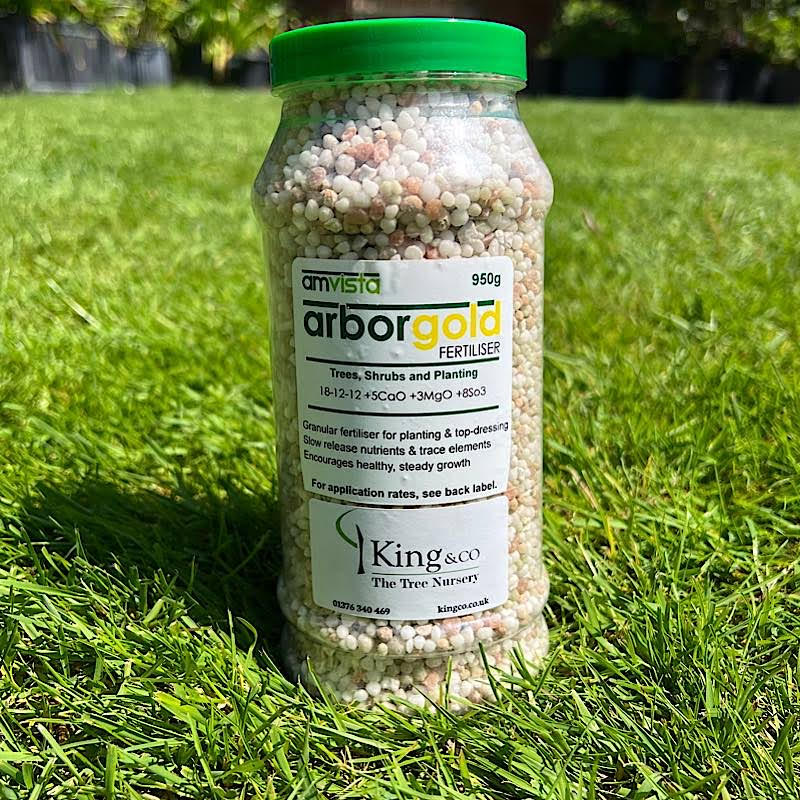
Maintaining a regular watering schedule, mainly over the first couple of growing seasons, is crucial for the growth and health of your tree. Thorough watering ensures that water reaches the roots, but achieving a consistent level of moisture in the soil is key. It’s vital to avoid letting the soil become too dry, as this will hinder the roots’ ability to absorb the necessary water for healthy growth and function, leading to stress. It’s equally important to prevent the soil from becoming waterlogged, as this would deprive the roots of essential oxygen from the surrounding air. By finding the right balance, you’ll give your new tree the best start!
For more information check out our article on watering newly planted trees!
It’s generally recommended to prune trees twice a year for optimal growth and shape.
Pruning right after the flowering period in late spring or early summer encourages bushier growth and the development of more branches. When trimming, be sure not to remove more than one-third of any individual branch’s length. This technique is beneficial for promoting denser growth, particularly in the lower and central areas of the tree.
A second prune in early September can help tidy up the tree’s shape. At this time, you can shorten any exceptionally long branches by up to one-third of their length. This helps to create a neat and even shape in preparation for new growth in the spring. Pruning around this time also allows any new shoots that emerge to harden off and become more resistant before the winter frosts arrive. It’s best not to prune much later than this.
Frequently Asked Questions
Container grown trees can be planted all year round. Watch our video guide on how to professionally plant and stake your tree!
As a guide, we recommend giving each tree 5 litres of water every other day during the growing season. The water should be directed at the base of the trunk.
5 Litres is a good starting point to make sure that the ground stays moist. If the soil starts to become saturated or dry adjust the amount as required.
We can offer our planting service if you are local to the nursery. Planting prices are dependent on the size of the pot. Please contact us if you would like a quote.
As the days lengthen and the temperatures increase, you might be spending more time enjoying your garden and perhaps considering ways to enhance its privacy. Planting trees for natural summer screening is a great way to obscure overlooking windows or soften strong sunlight.
At King & Co we have a variety of trees to suit your needs. Explore some of our top picks for screening trees and take the first step towards achieving your desired garden privacy this summer!
When you’re choosing trees one of the first things to consider is whether evergreen or deciduous varieties would better suit your needs.
Evergreen trees retain their foliage year-round so they are a fantastic choice for providing consistent privacy and structure throughout the year. They also bring welcome colour to gardens during the winter months, offering a splash of green when many other plants are bare.
In contrast, deciduous trees lose their leaves in the winter but offer a wonderful display of seasonal changes. They bring beauty to gardens with their spring blossoms, fresh green leaves in spring and summer, and a spectacular show of autumnal colours. Even when bare, their branches can still offer some screening while allowing more light into your garden during the darker winter months! Deciduous trees are ideal for those who prefer not to have year-round full coverage and wish to maximise sunlight during the colder seasons.

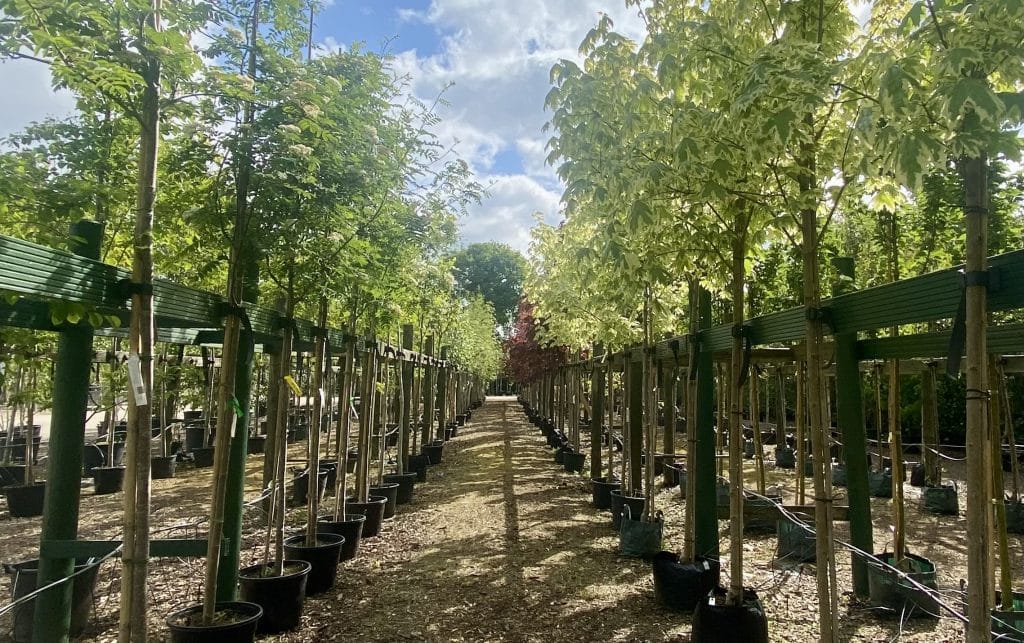
If you’re looking for year-round foliage, privacy and structure then you may want to plant an evergreen tree! Our most popular evergreen varieties are Photinia Red Robin, Cherry laurel and Portuguese laurel! Seen here with clear stems and a full head of foliage, these standard trees are ideal for creating a raised hedge that sits above the fence line without overwhelming your garden space.
Please also note that all three evergreen varieties are available in hedge form should you prefer continuous foliage from the ground up!



As previously mentioned, deciduous trees lose their leaves in winter but offer a wonderful array of seasonal changes to gardens. For effective summer screening, we particularly recommend the Norway maple (specifically the Drummondii and Royal Red varieties), the Himalayan birch, and the Ornamental pear.
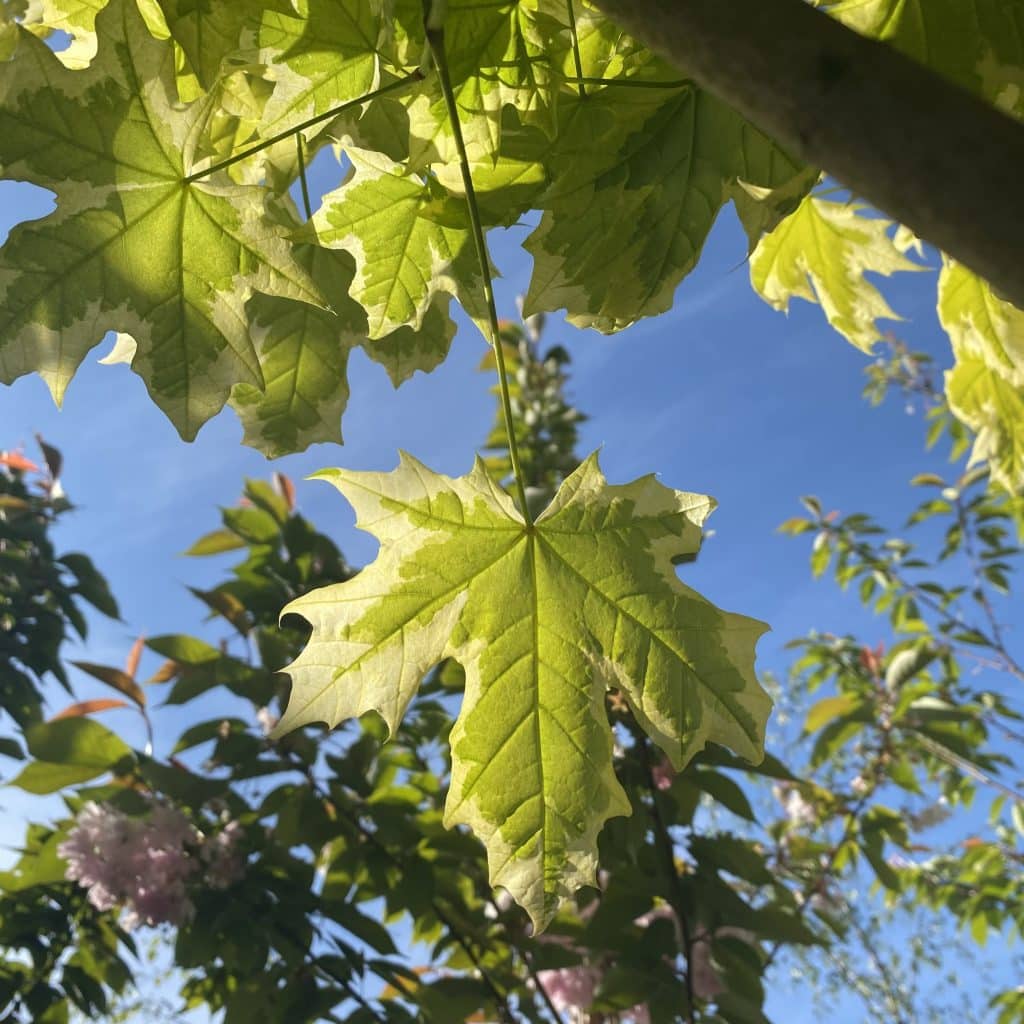
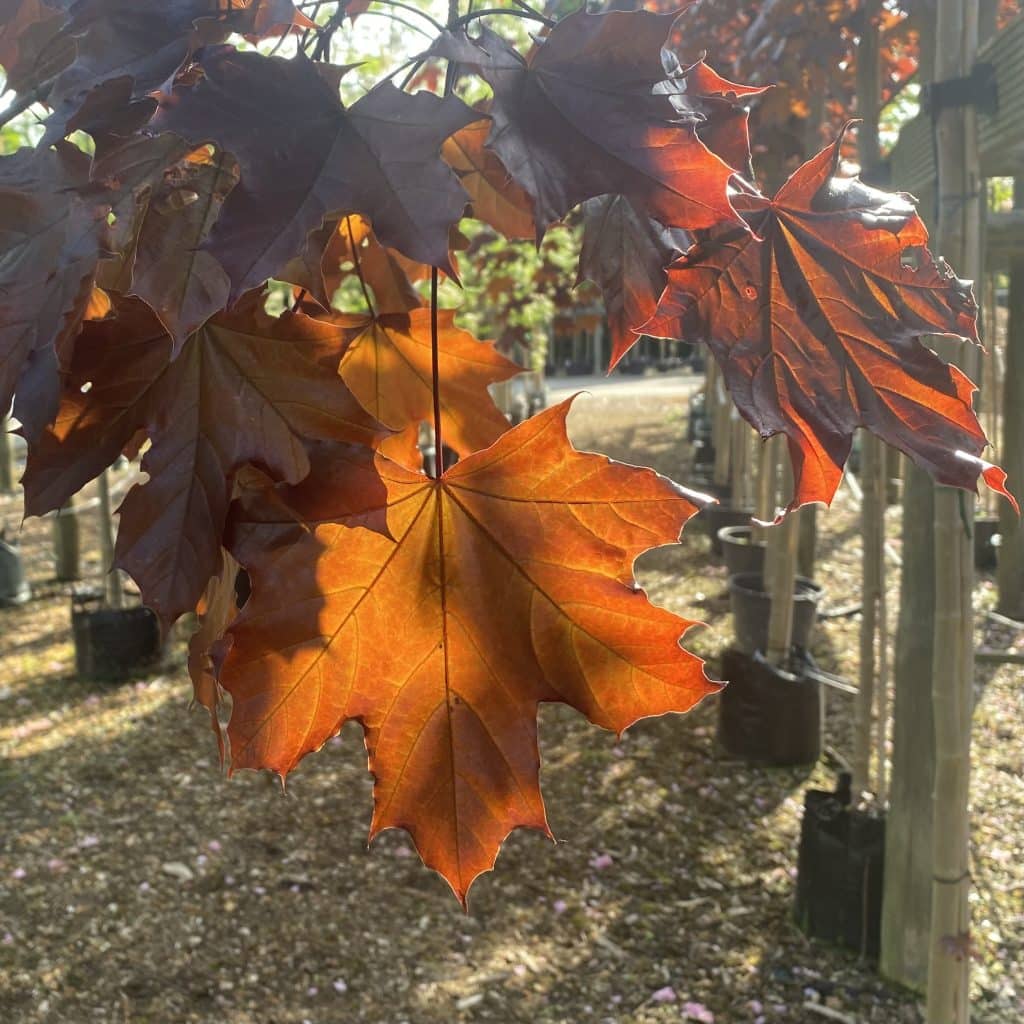
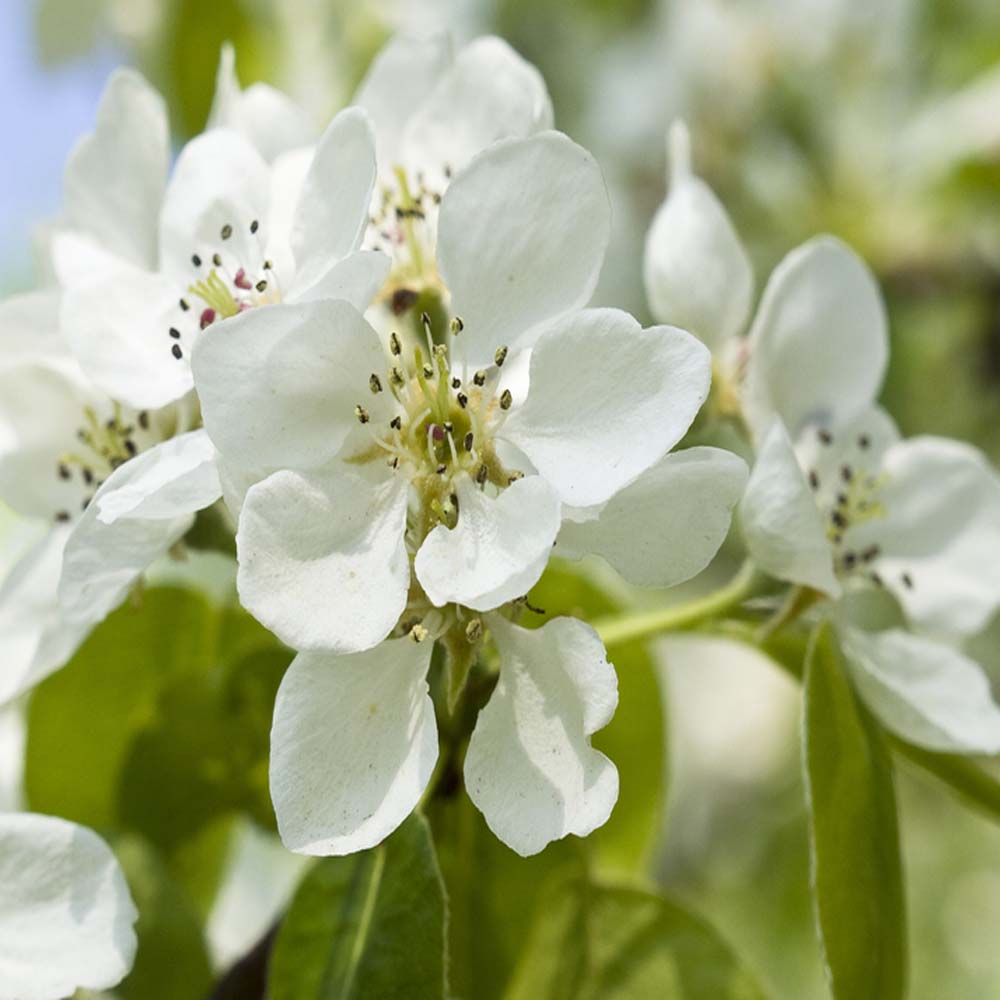
Norway maple 🍁: If you’re exploring options for summer screening, you could consider the Acer platanoides ‘Drummondii’ or ‘Royal Red’ for their unique visual appeal. The ‘Drummondii’ maple has beautiful variegated leaves that create an eye-catching focal point in your garden. Alternatively, the ‘Royal Red’ maple has vibrant purple-red foliage that adds a wonderful point of contrast. Both of these maple varieties develop dense canopies as they mature, this creates a full and appealing screen during the summer months.
Please note that both the ‘Drummondii’ and ‘Royal Red’ maples will reach a mature height of 10-15m and a spread of 8-10m. This means that they are best suited for medium to large-sized gardens where they have ample space to grow.
Ornamental pear 🌼: If you have limited space, an upright tree such as Pyrus calleryana ‘Chanticleer’ (Ornamental pear) might be a great option for you. The ‘Chanticleer’ variety has an upright shape and a compact crown, making it well-suited for smaller gardens or boundary planting. It also offers dense foliage, spring flowers, and attractive ornamental leaves, providing good summer screening and seasonal appeal.
Himalayan birch ❄️: Himalayan birch has an open branching structure that allows light to filter through the canopy. This creates a pleasant dappled sunlight and shade effect, ideal if you have a garden with limited sunlight or you are seeking a softer screening option!
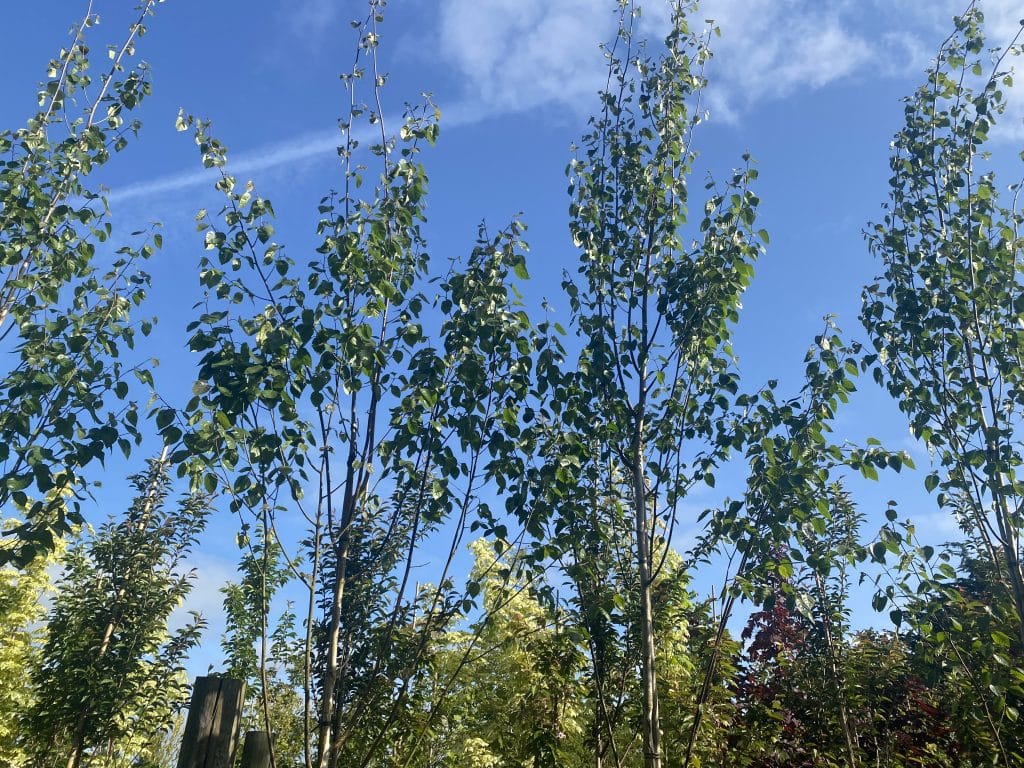
Discover trees for natural summer screening today!
Bare root trees can be planted from November to March. Container grown trees can be planted all year round. Watch our video guide on how to do so.
As a guide, we recommend giving each tree 5 litres of water every other day during the growing season. The water should be directed at the base of the trunk.
5 Litres is a good starting point to make sure that the ground stays moist, if the soil starts to become saturated or dry adjust the amount as required.
We can offer our planting service if you are local to the nursery. Planting prices are dependent on the size of the pot. Please contact us if you would like a quote.
At King & Co, we stock pleached Cherry laurel, Photinia Red Robin and Hornbeam, with frame sizes ranging from 1 to 1.5 metres (depending on the variety). In our guide to pleached trees, we will introduce these options and explain how they can be planted to increase privacy and block views from overlooking, neighbouring properties.
Pleached trees have a more formal screening shape than the natural growth of traditional hedges. These trees are an excellent choice for those looking to enhance privacy, as they establish an instant screen without taking up valuable garden space. Their defining qualities include their effectiveness in enhancing privacy, defining boundaries, providing year-round structure and making efficient use of space!
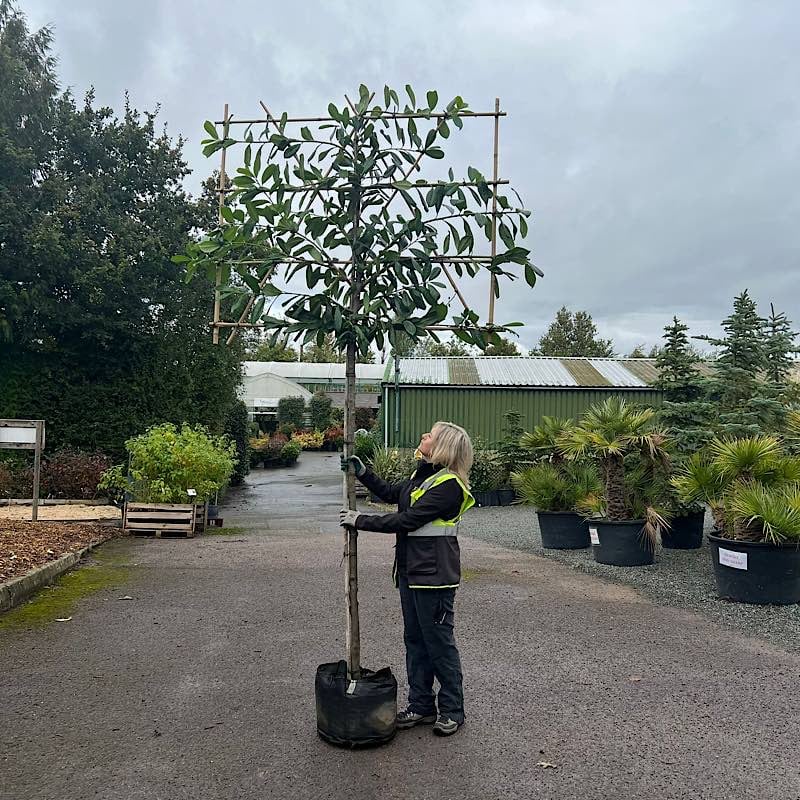
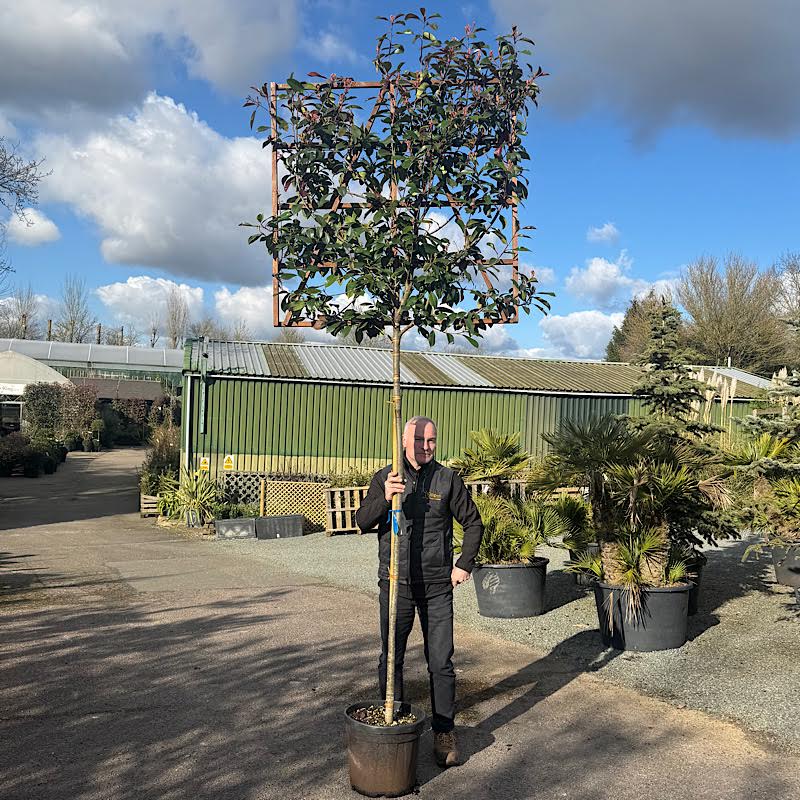
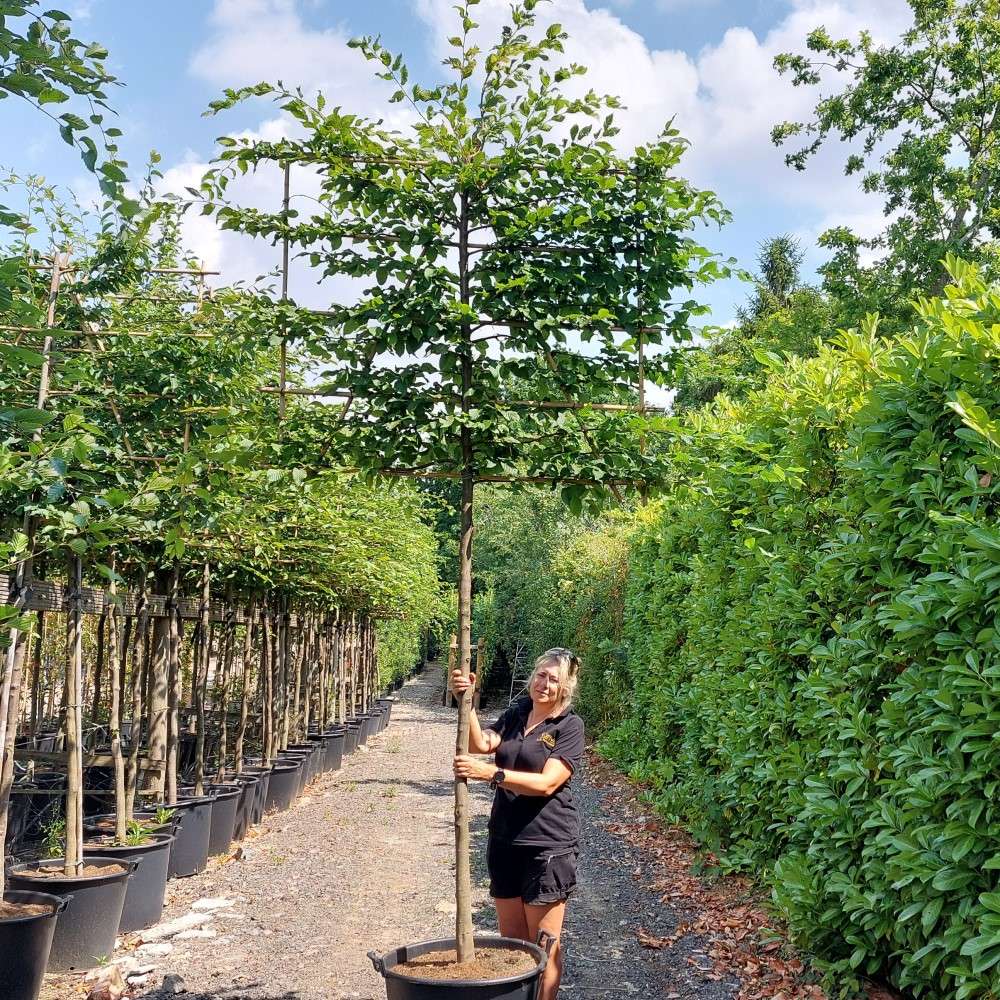
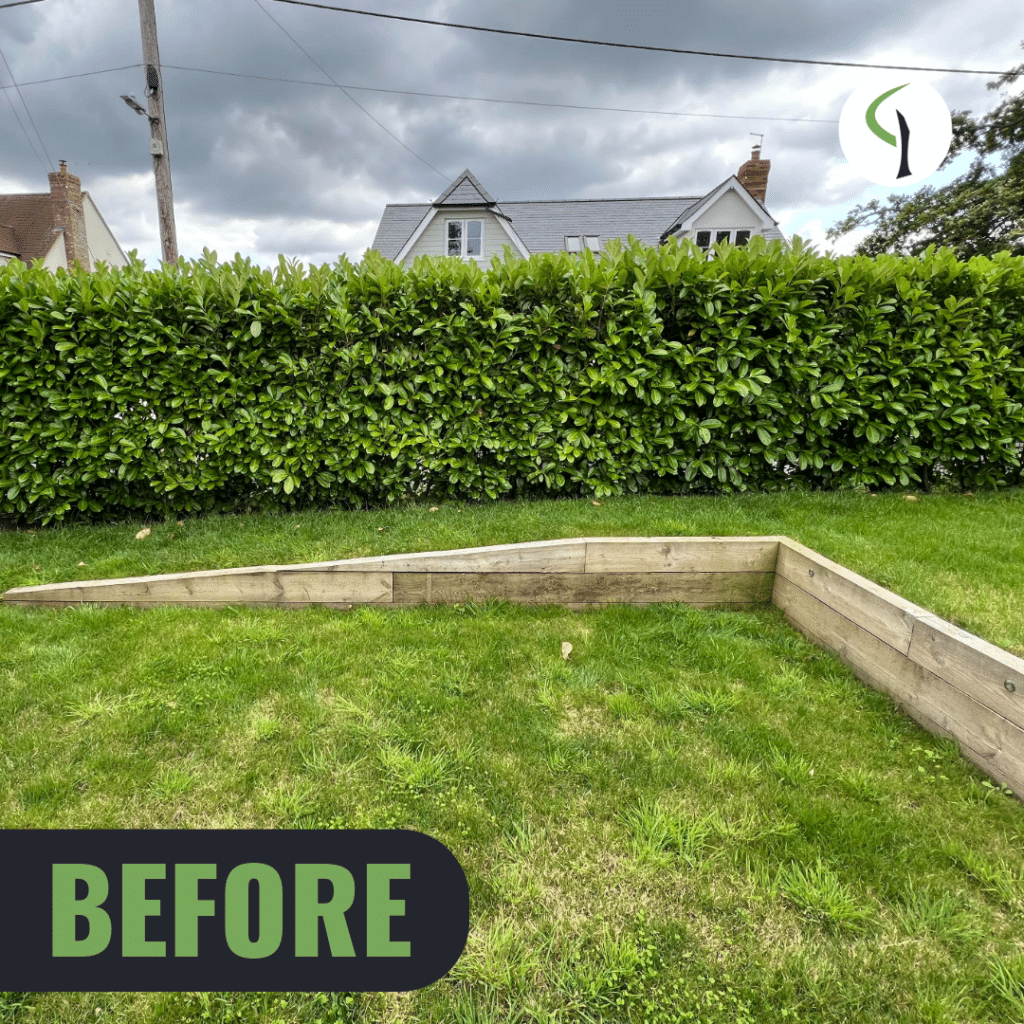
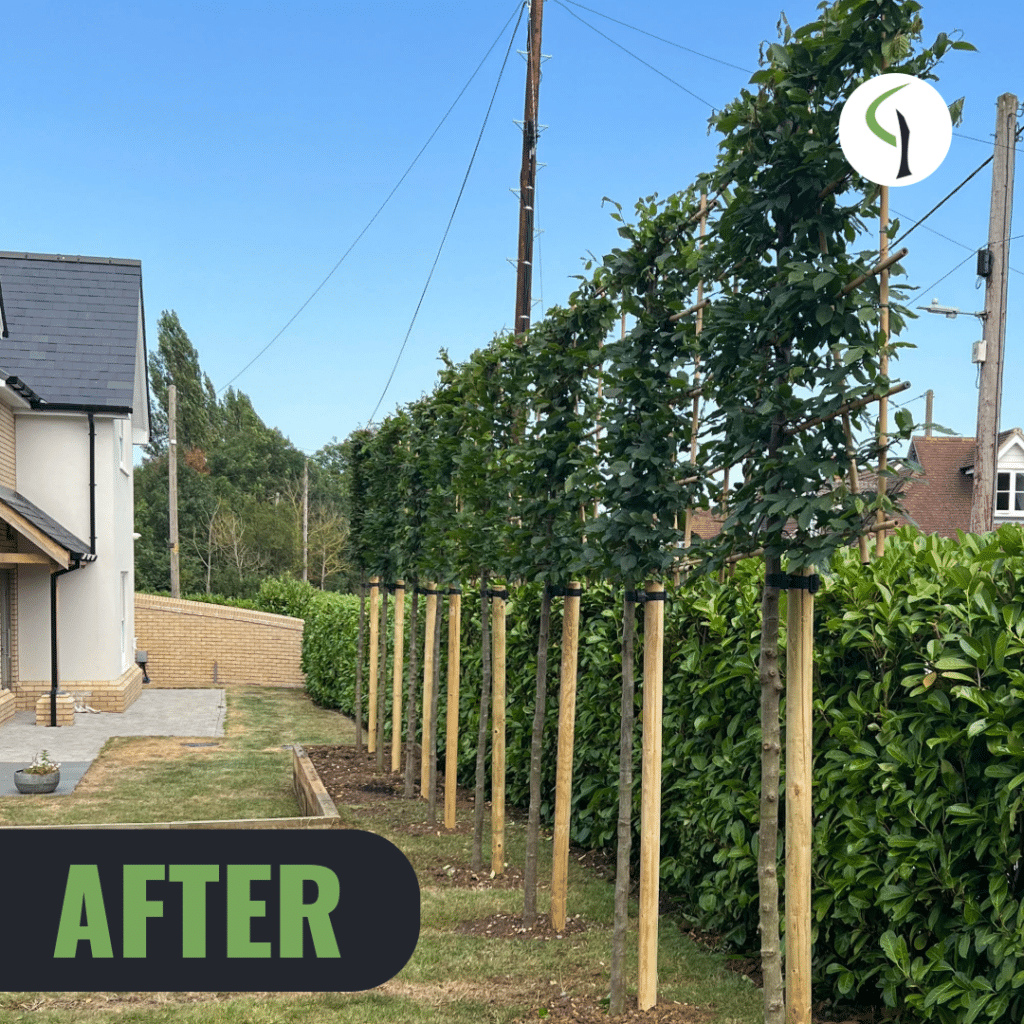
We recently completed an installation for a customer who wanted to enhance the privacy and shade around their new build property. To meet their needs, we installed eight pleached hornbeam trees along the hedge line. They were planted at 1.5m centres to create a seamless, ‘touching’ finish.
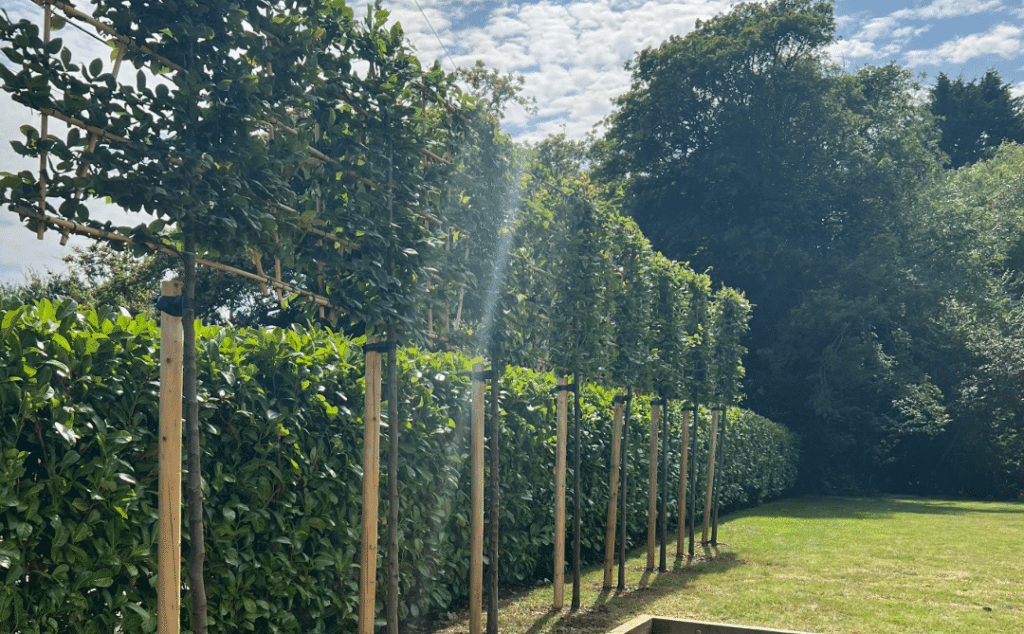
Hopefully our guide to pleached trees was helpful. For further advice contact the King & Co team, we can advise the best trees for screening your garden with just a few photos and measurements!
Read more:
Did you know that you can pick your own trees when you visit King & Co? Simply browse our selection and choose the trees you love, we’ll then deliver the trees straight to your door.
Whether you’re after stunning blossoms, vibrant foliage, or berry-filled trees to attract wildlife, we have something for everyone! With warmer temperatures and more time spent outdoors, now is the perfect season to plant evergreens to add natural privacy your garden when you need it most. Discover our top evergreen screening solutions for your privacy concerns and transform your outdoor space today!

Screening trees are an excellent option for instant privacy. At a current height of around 3 meters, they can be planted to form a raised hedge above your fence line to provide immediate screening.
You can plant these trees 1.2 to 1.5 meters apart to create a continuous screen, or strategically place one to block a specific unwanted view.



Evergreen hedging units are another way to create an instant screen from the ground up. These units are great for those who want to add privacy to their garden or enhance a boundary.
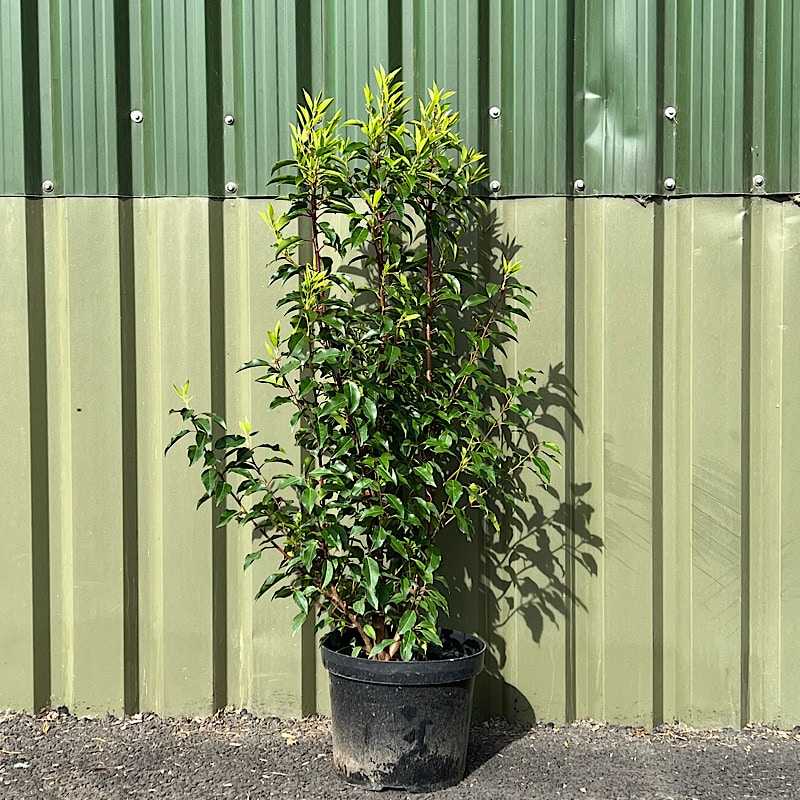
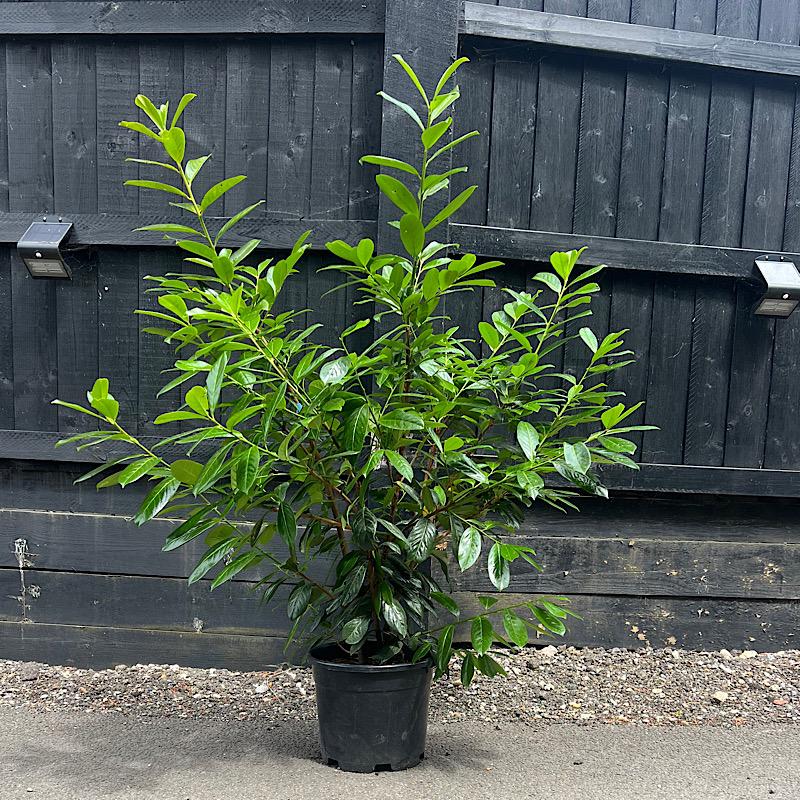
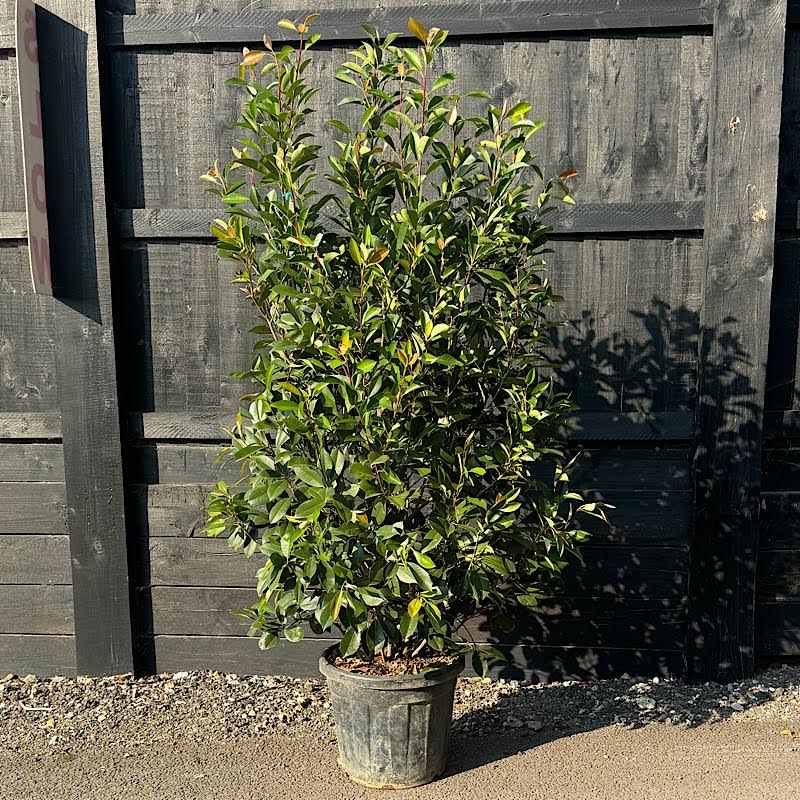
Why wait to transform your garden? Pick your own trees, hedging plants and shrubs today!
Staking and tying is an essential step after planting as it helps to support young trees as they establish. Depending on the size of your tree or where it is going to be planted, you can either single or double stake your trees. For further advice watch our video planting guide.
Feeds and fungis can also be added to the soil to give the trees the best start after planting. Check out the products we can supply here.
As a guide, we recommend giving each tree 5 litres of water every other day during the growing season. The water should be directed at the base of the trunk.
5 Litres is a good starting point to make sure that the ground stays moist, if the soil starts to become saturated or dry adjust the amount as required.
We can offer our planting service if you are local to the nursery. Planting prices are dependent on the size of the pot. Please contact us if you would like a quote.
You can buy trees, hedging, shrubs and topiary online by browsing our website.
If you do not see a plant or size that is suitable for you then please call as we stock a wide variety of plants in our tree nursery. It’s worth noting that many other websites sell other people’s stock (i.e. they act as an agent) so you cannot view the products at their own site. At King & Co, all of our advertised plants are available for viewing at our tree nursery in Rayne, near Braintree, situated just over an hours drive out of London.
Our knowledgeable and experienced tree nursery staff are always contactable via phone on 01376 340469 or if you have any questions regarding any of our trees or accessories.
If you cannot see what you require on our website, please complete the enquiry form. We will give it our urgent attention and will get back to you shortly with a solution that meets your needs.
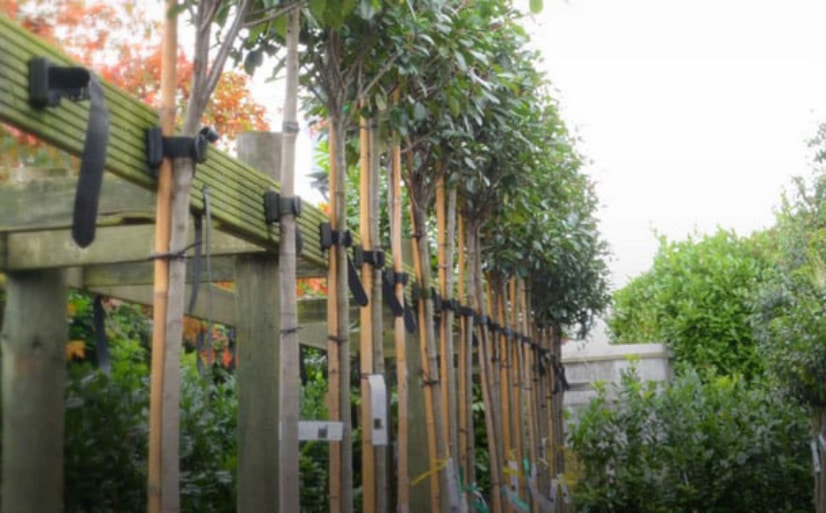
If you are looking for specific evergreen trees, Photinia, Leylandii hedging, Leylandii trees, instant hedging or shrubs, use the search bar at the top of the page